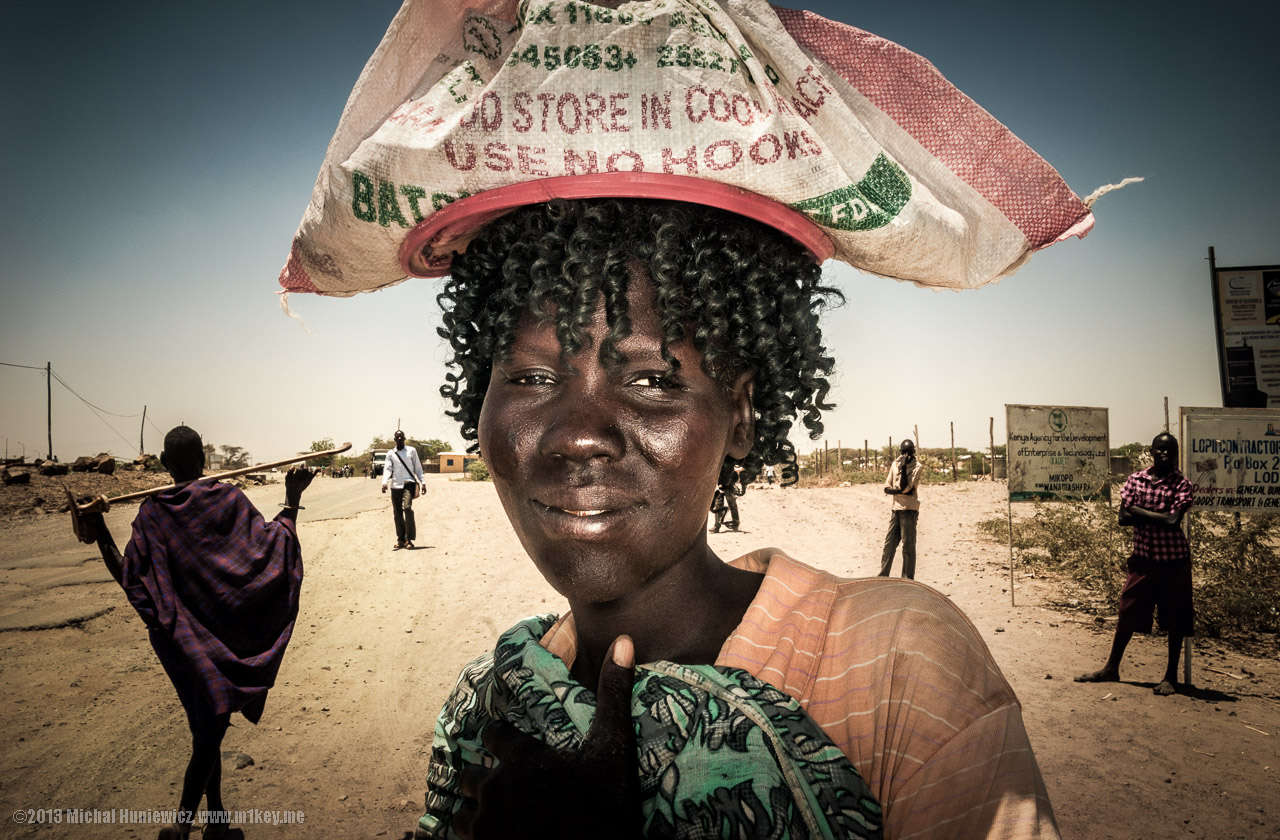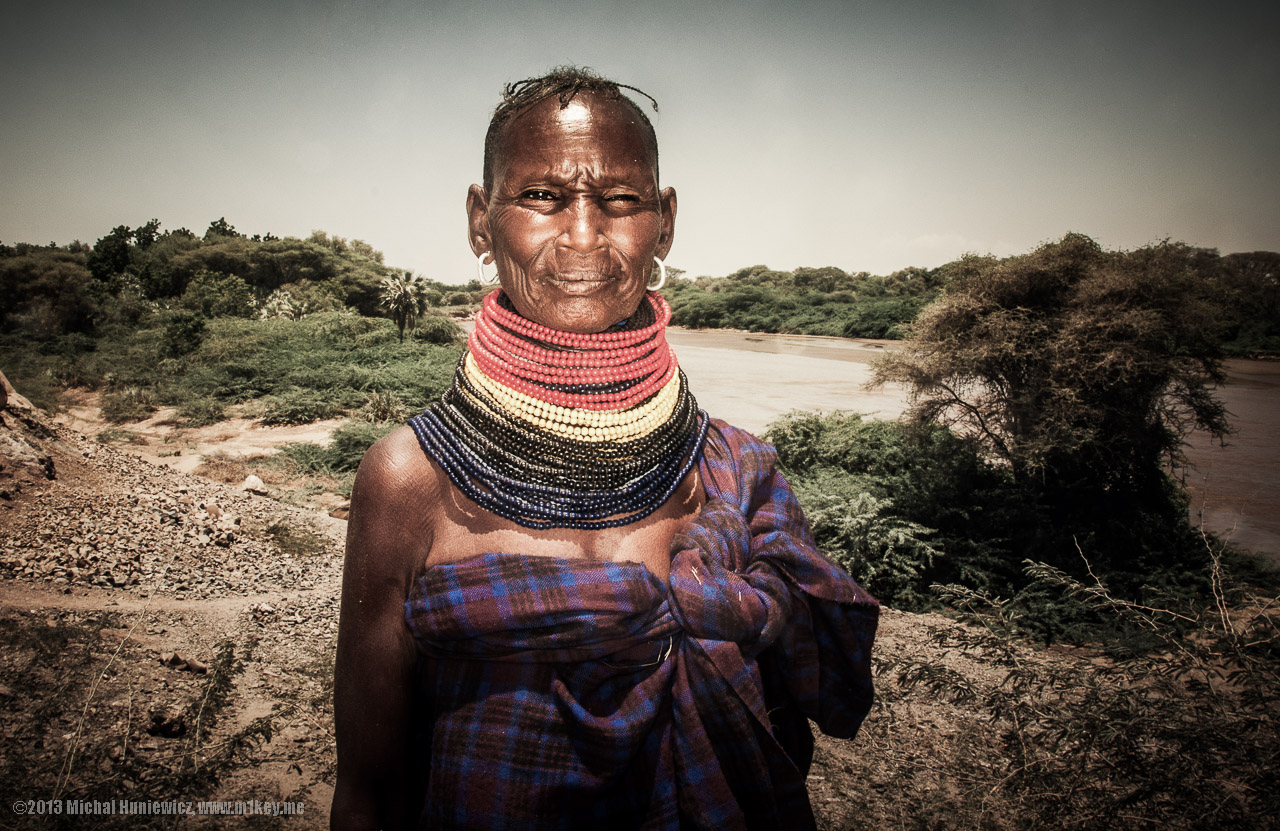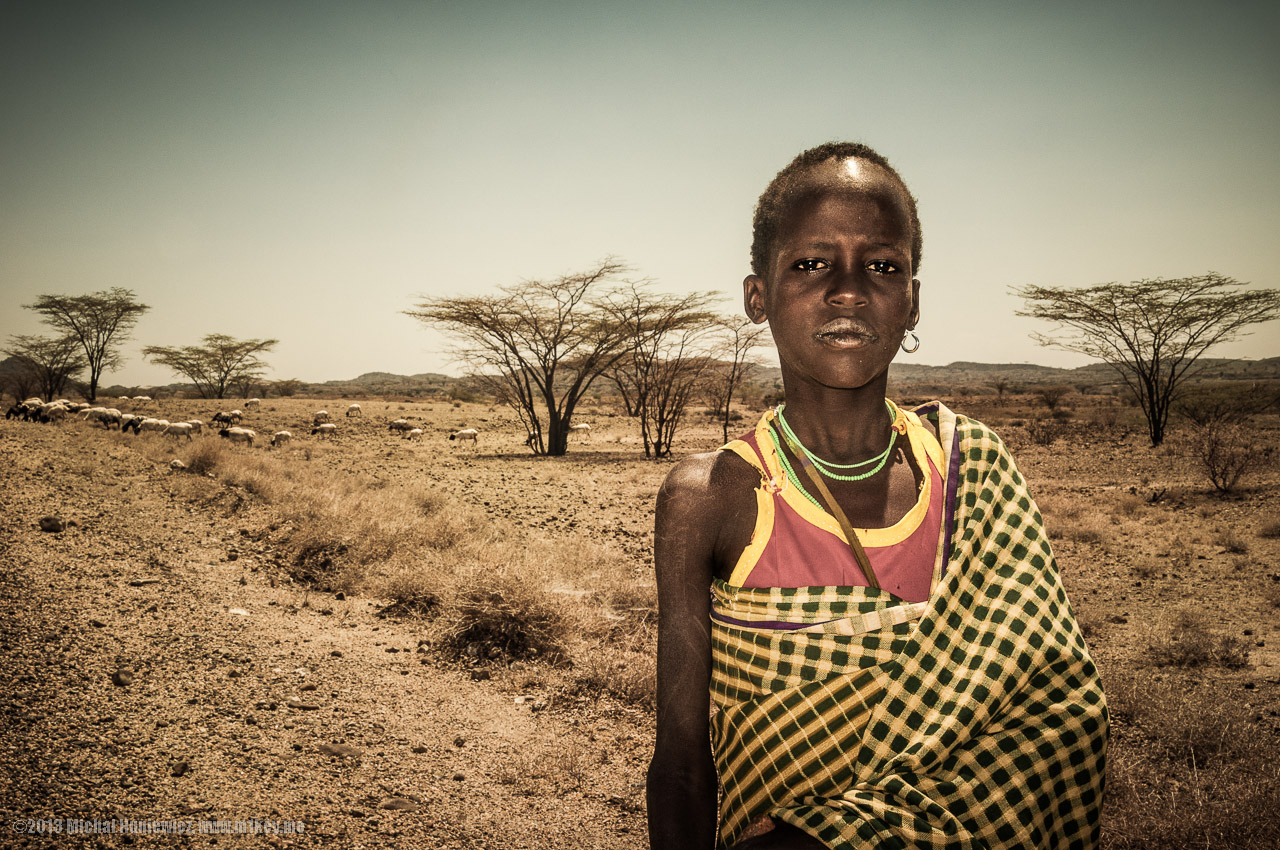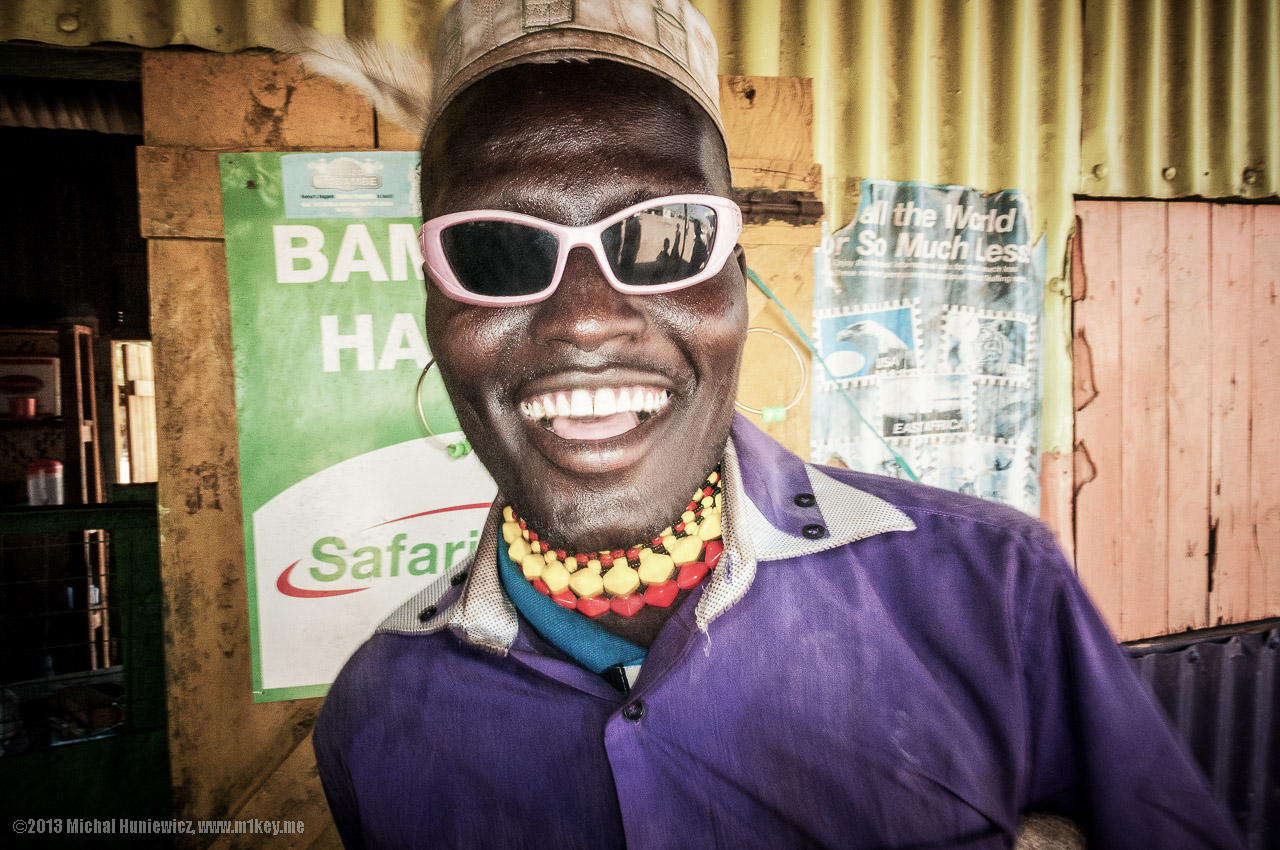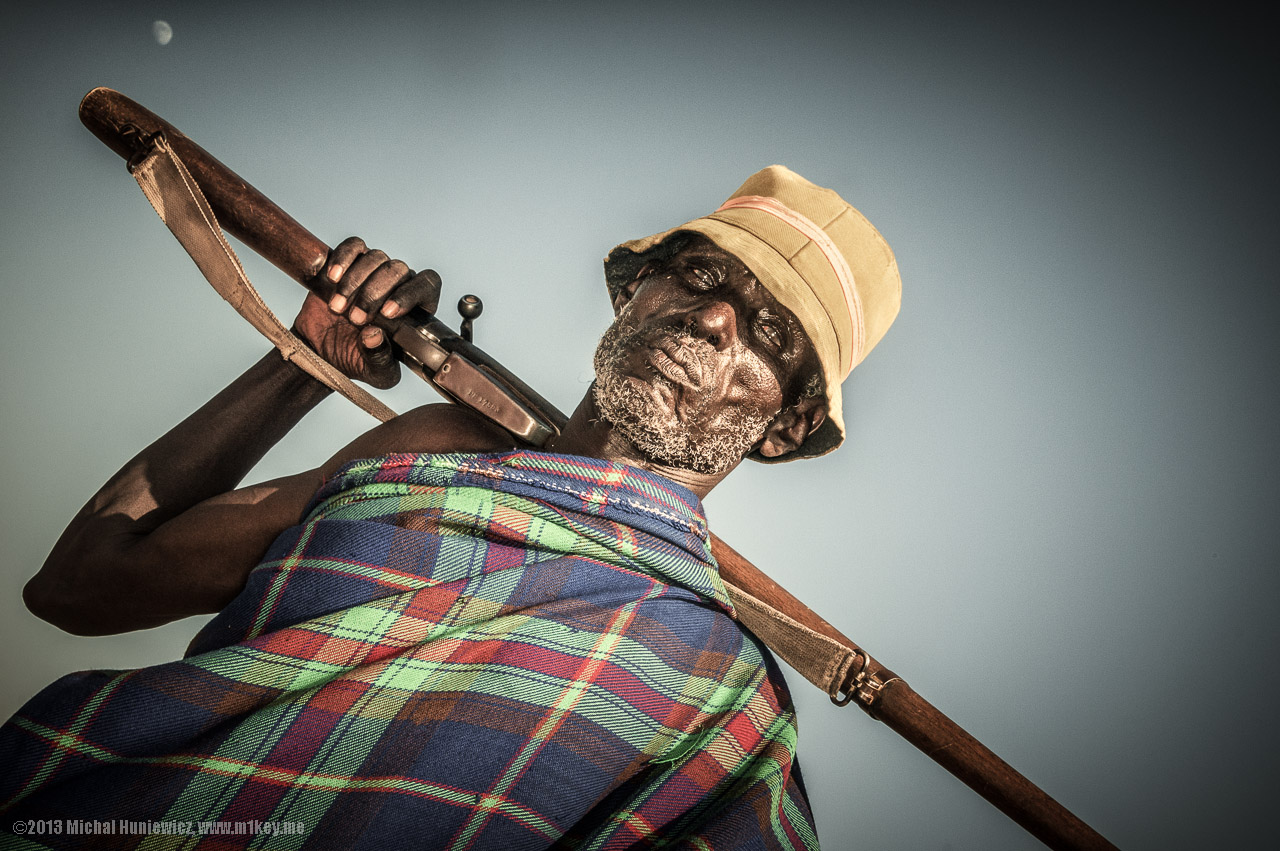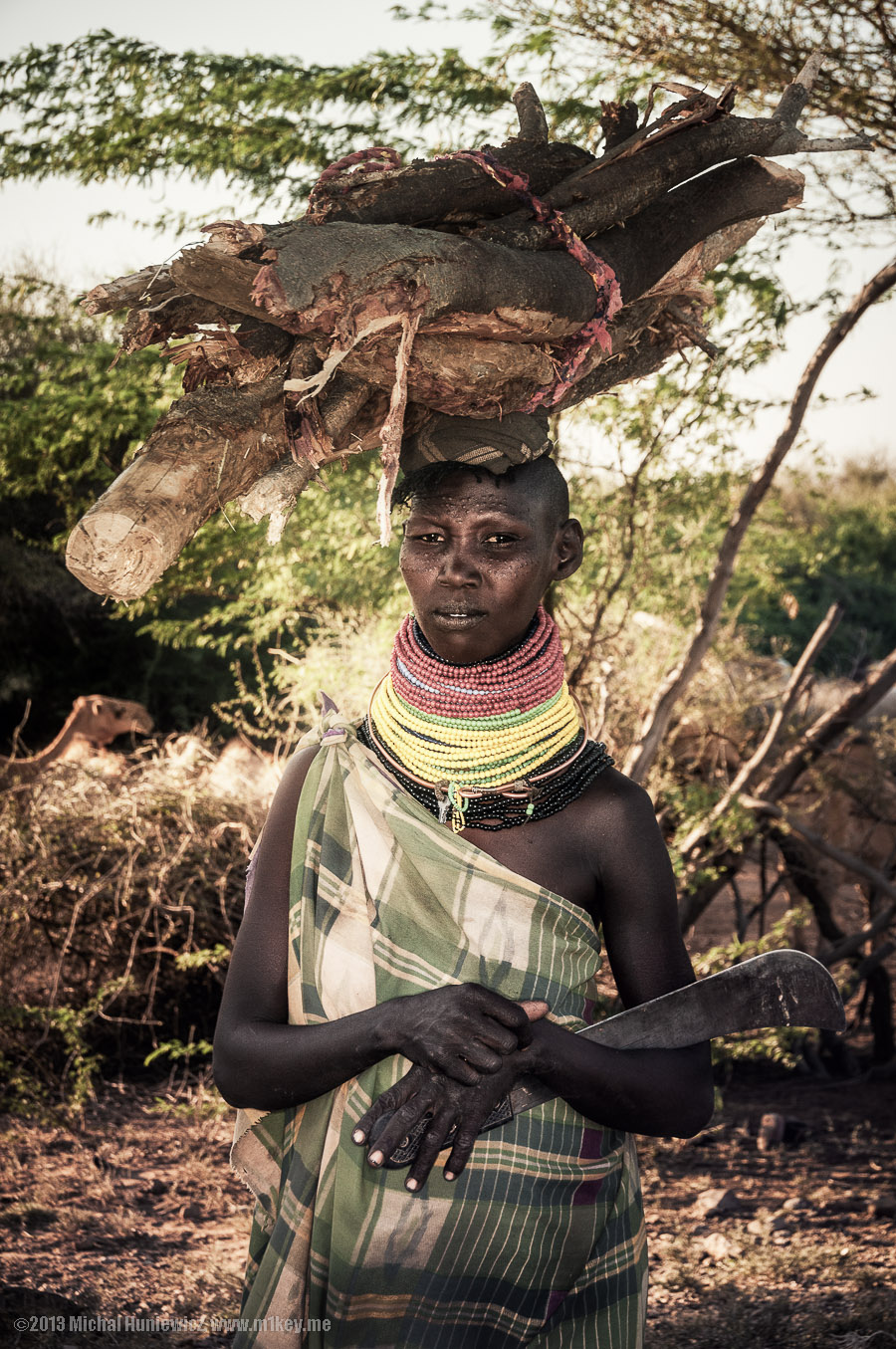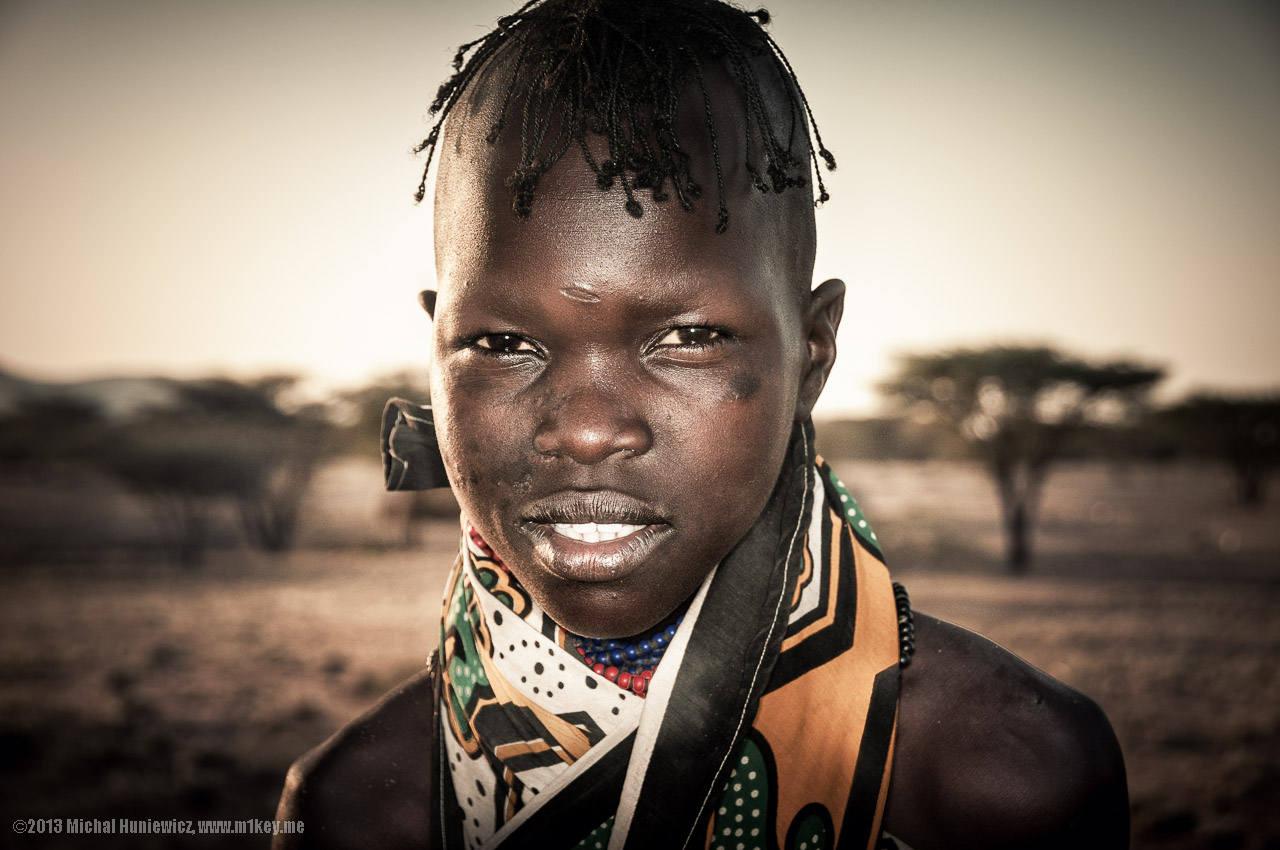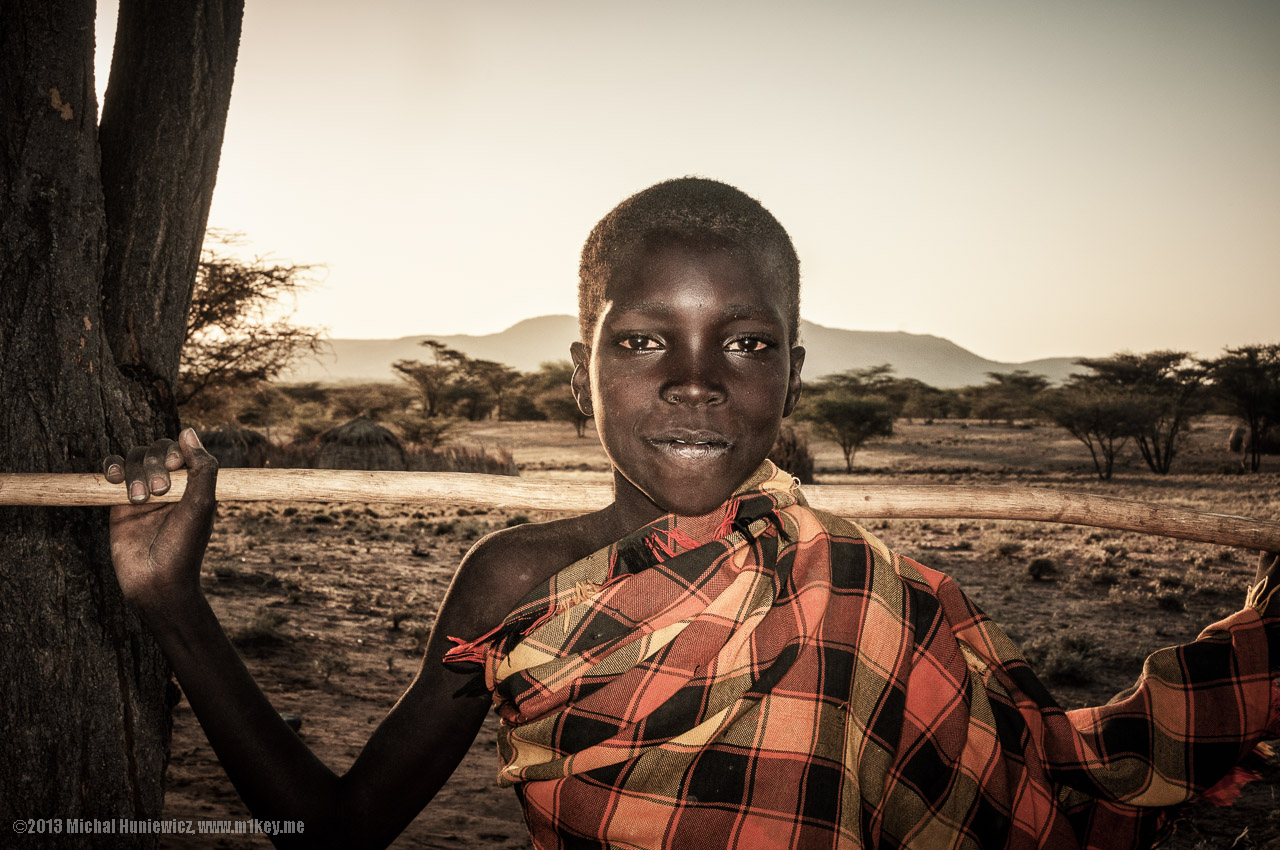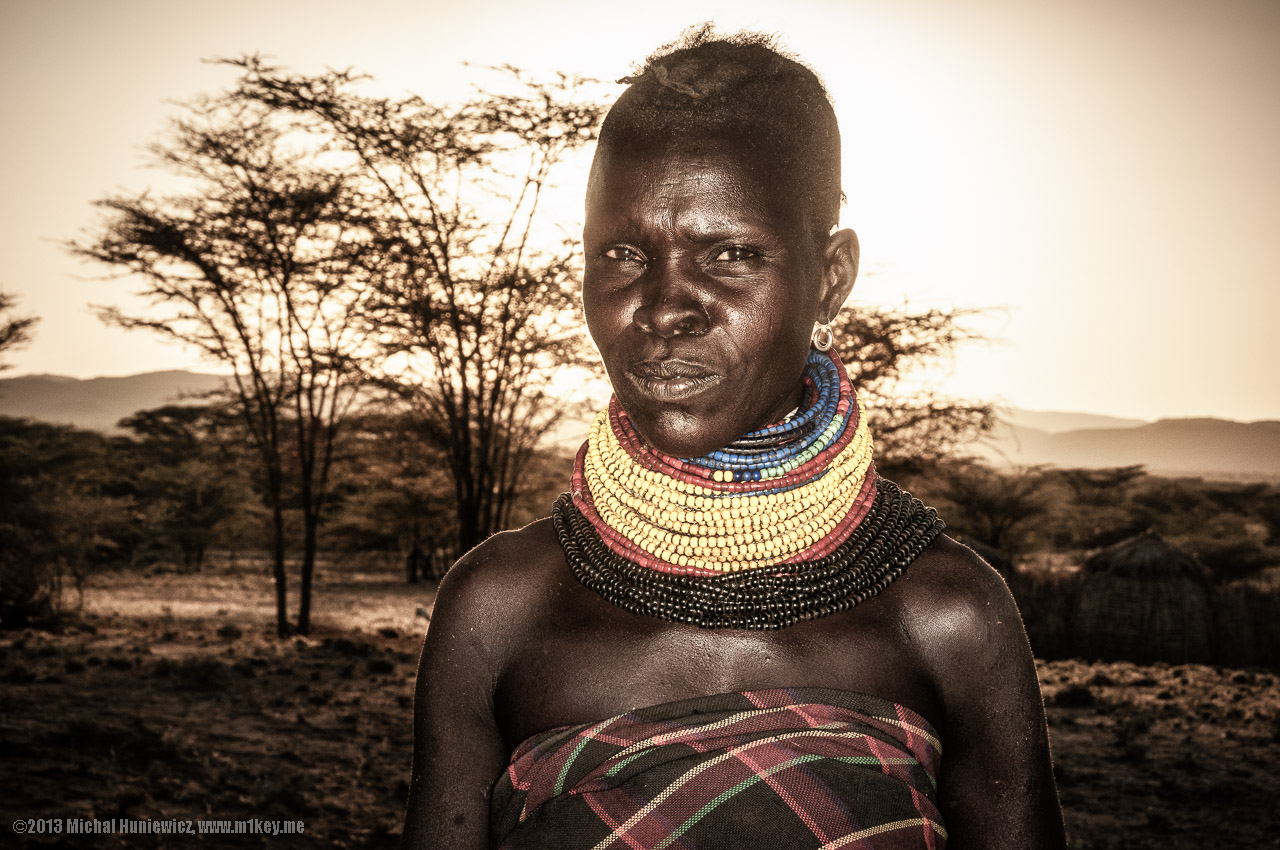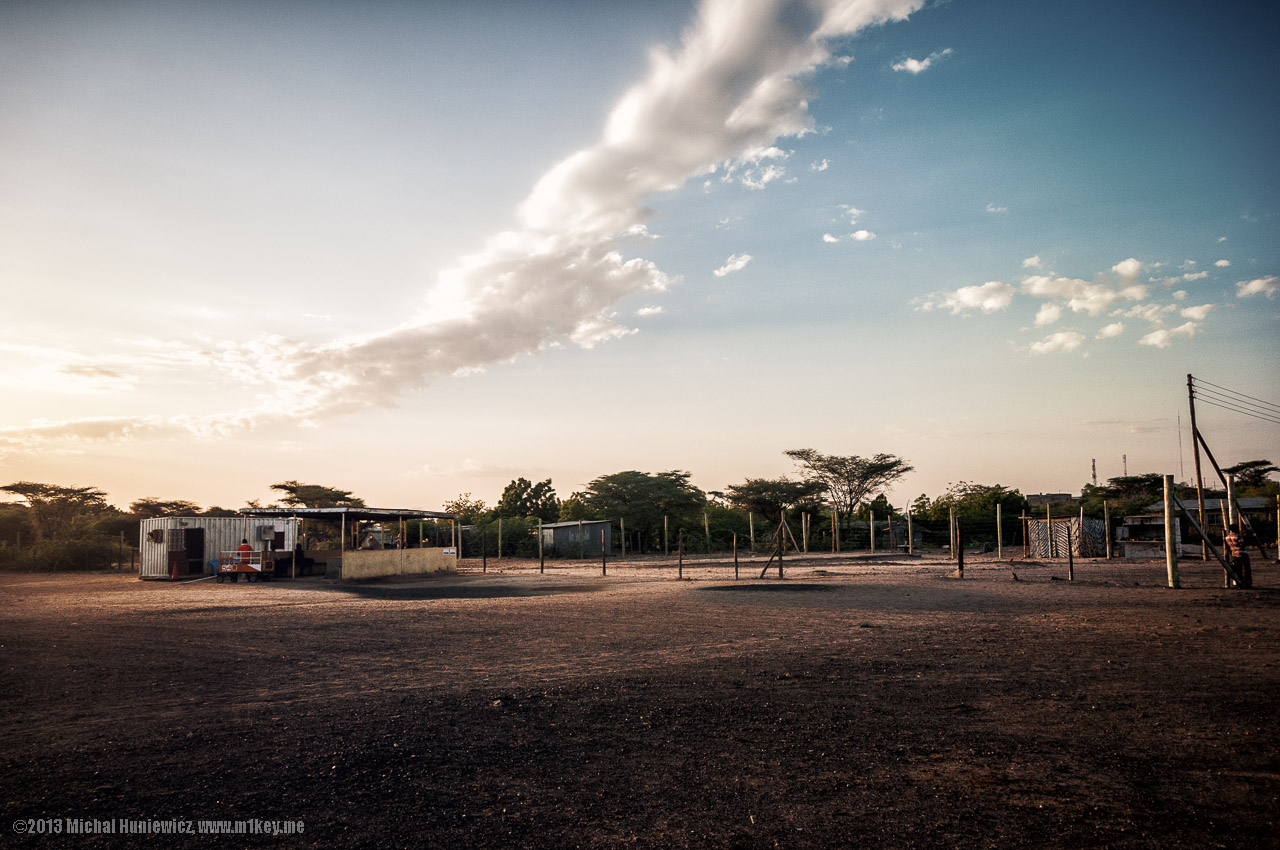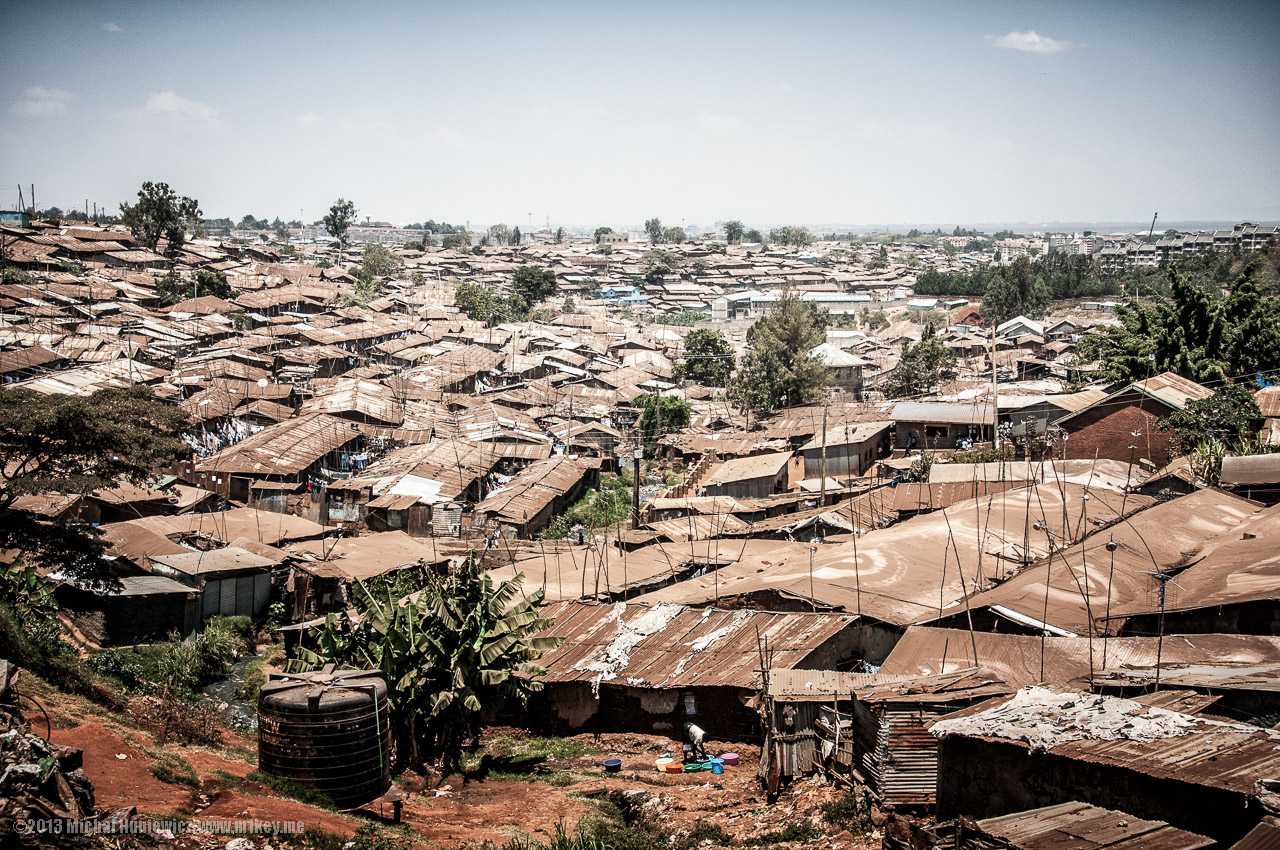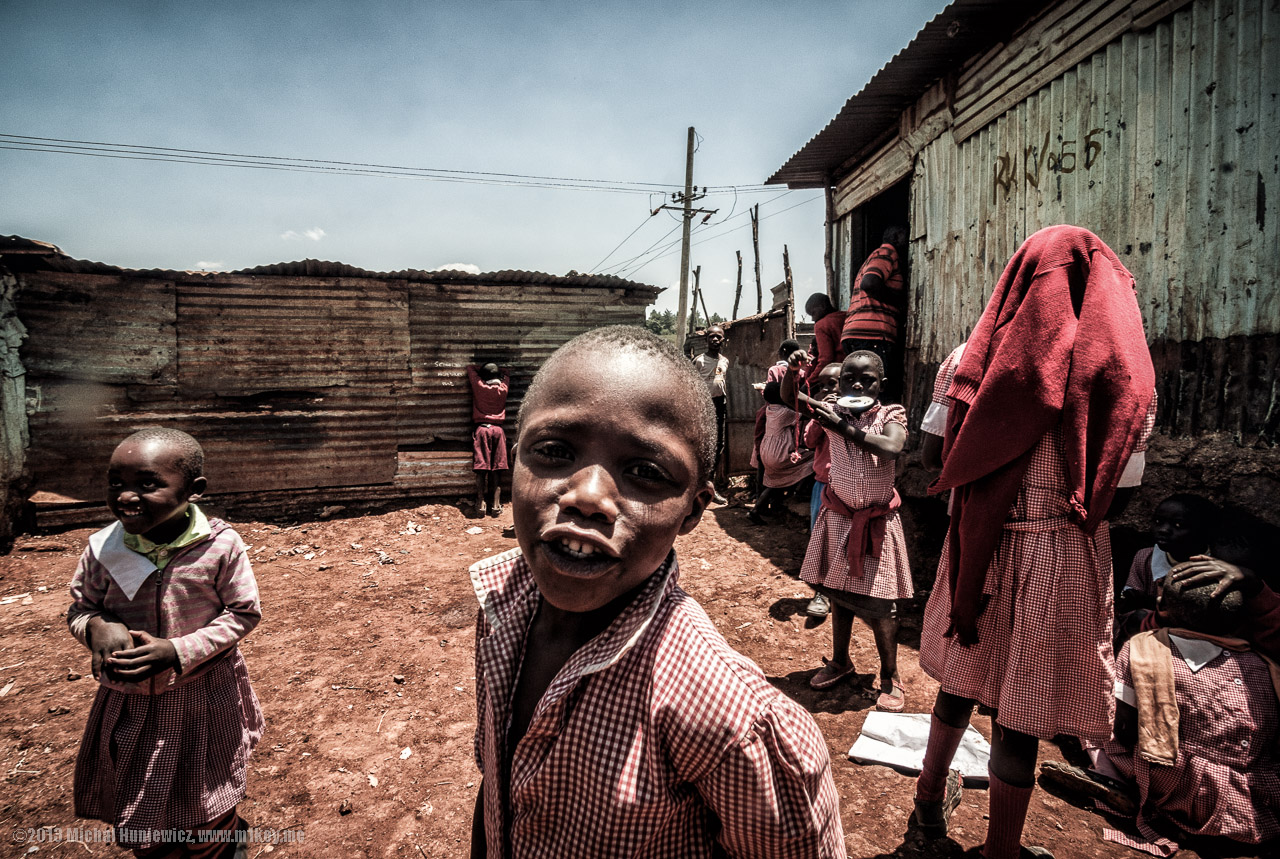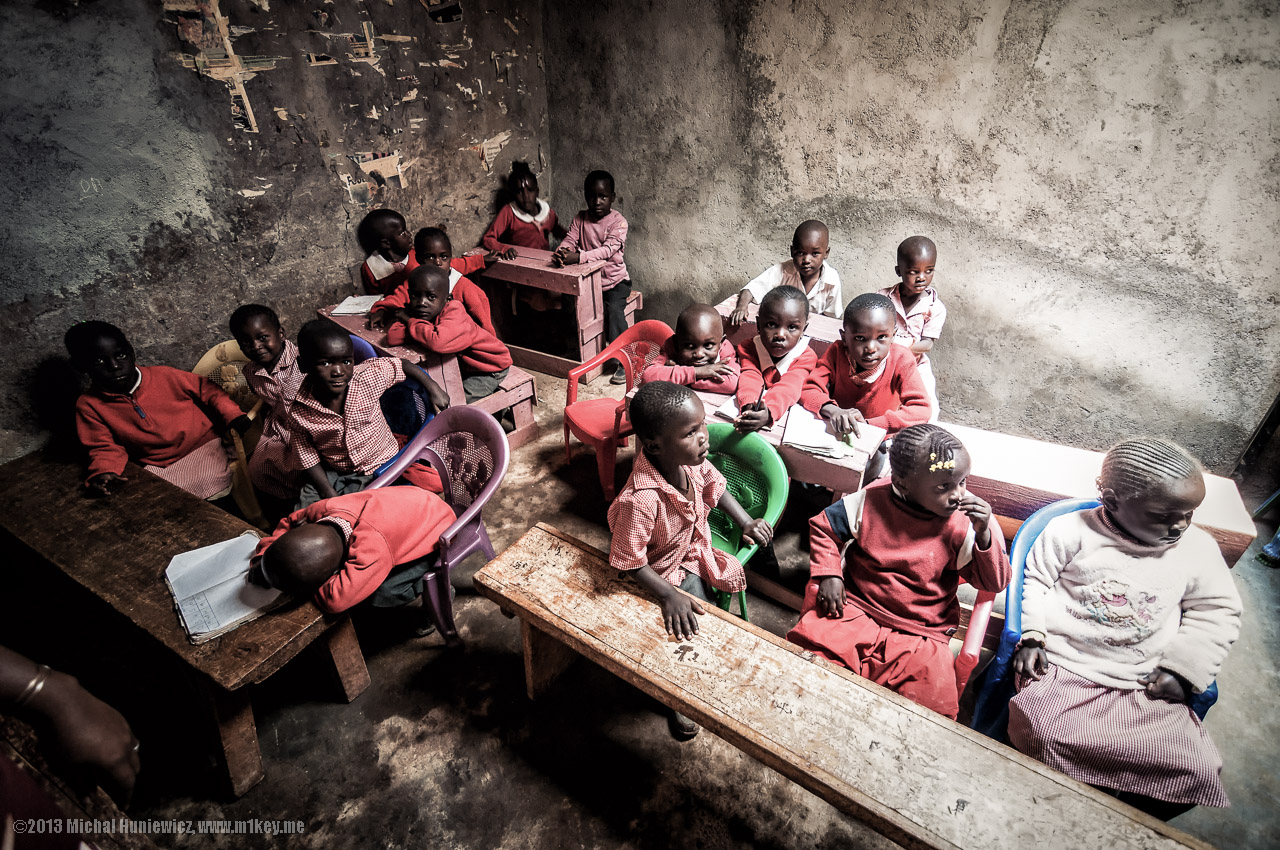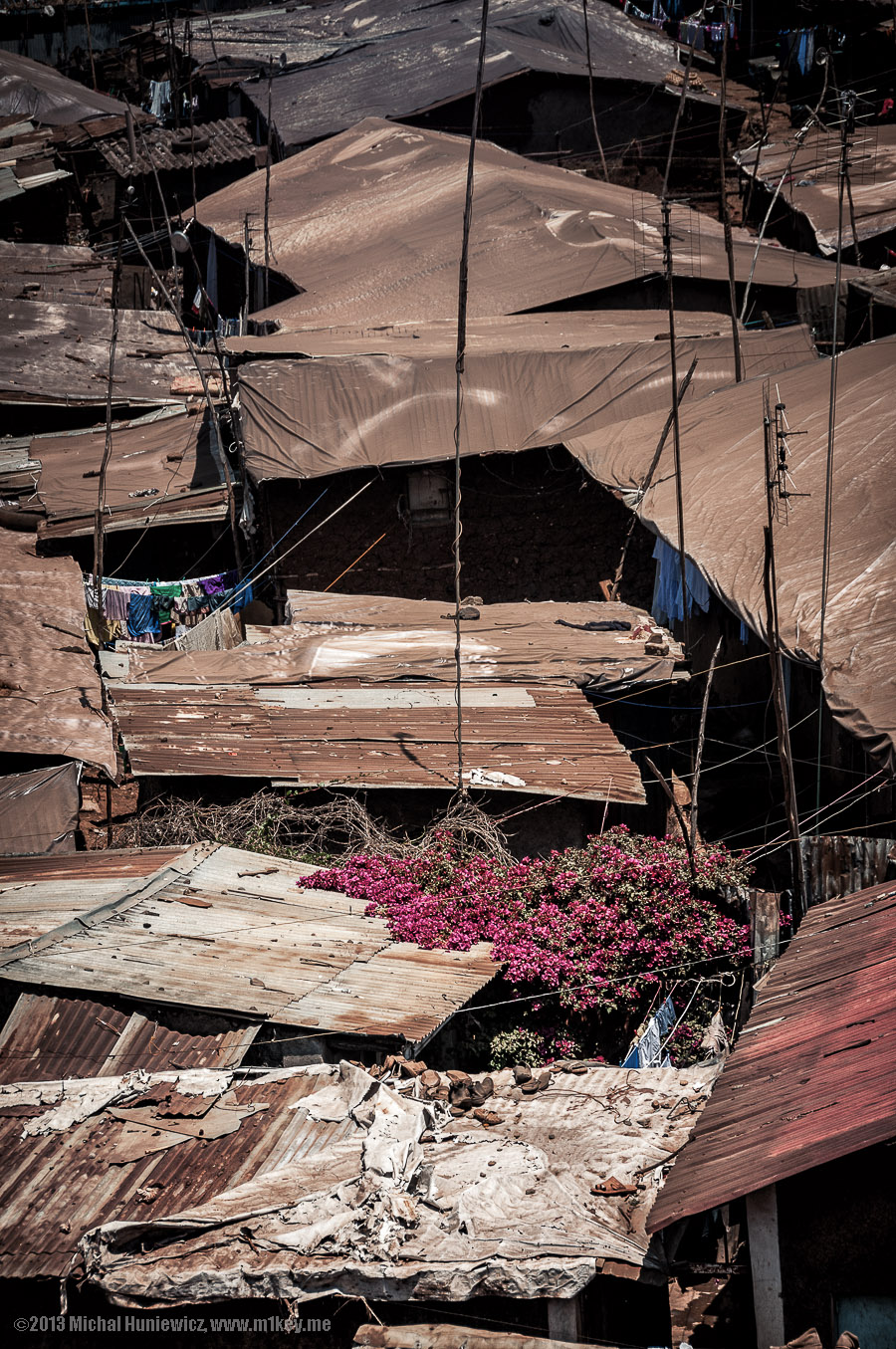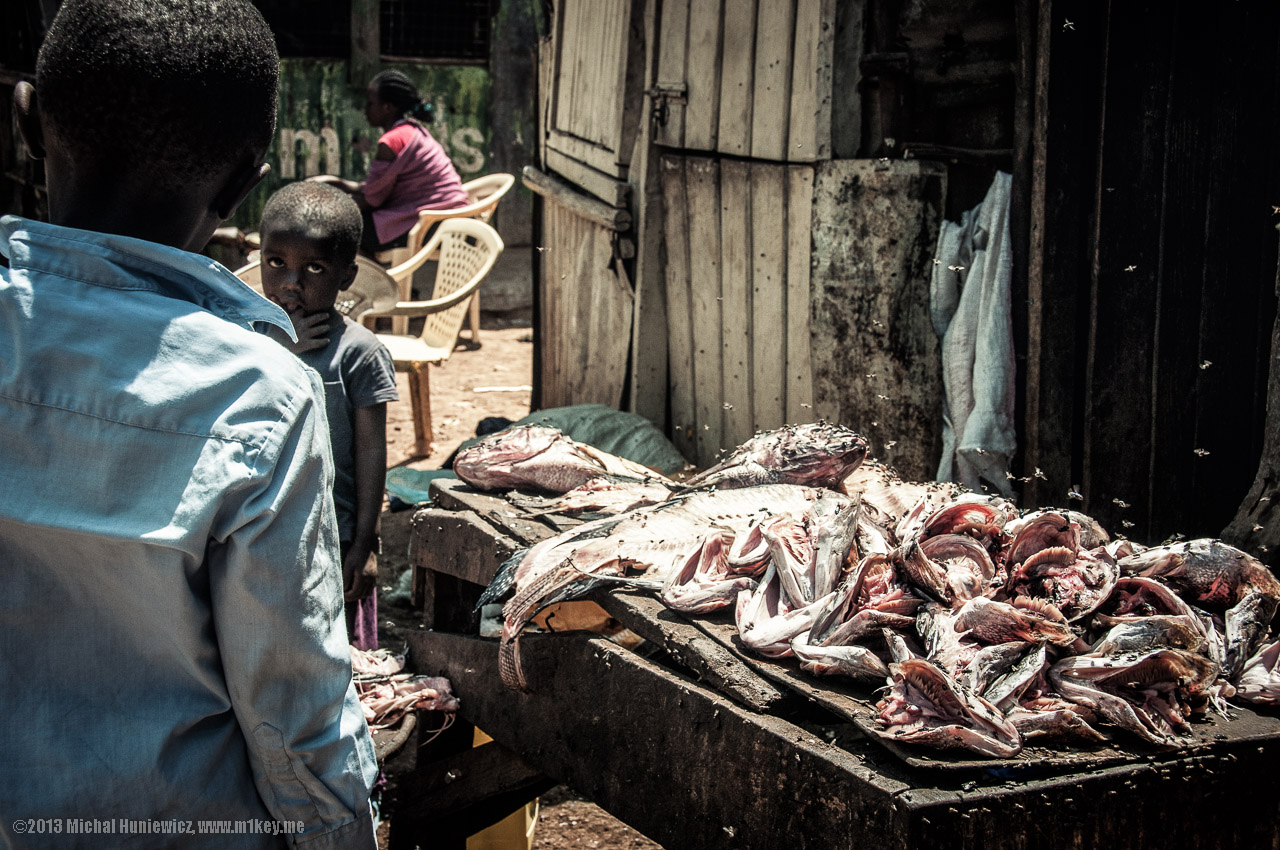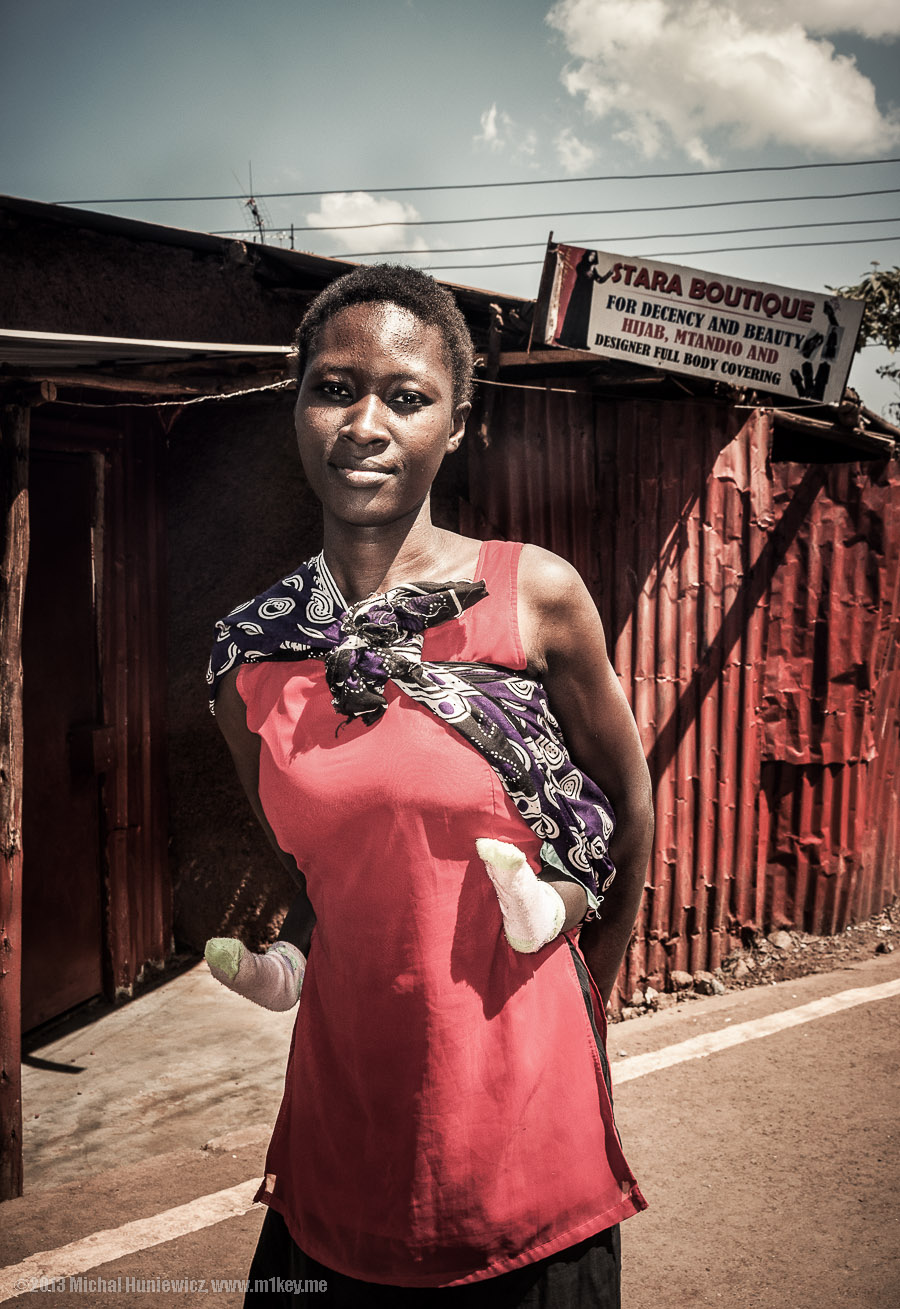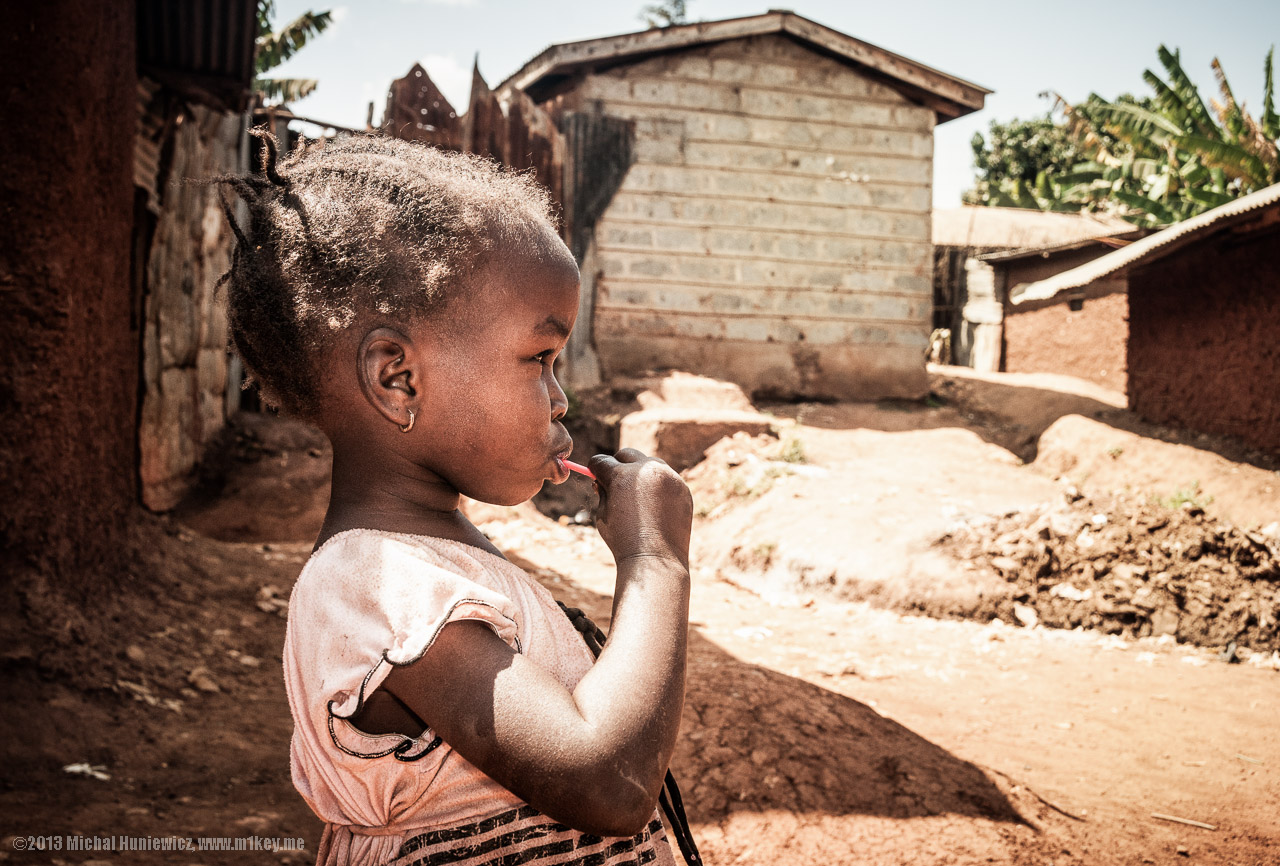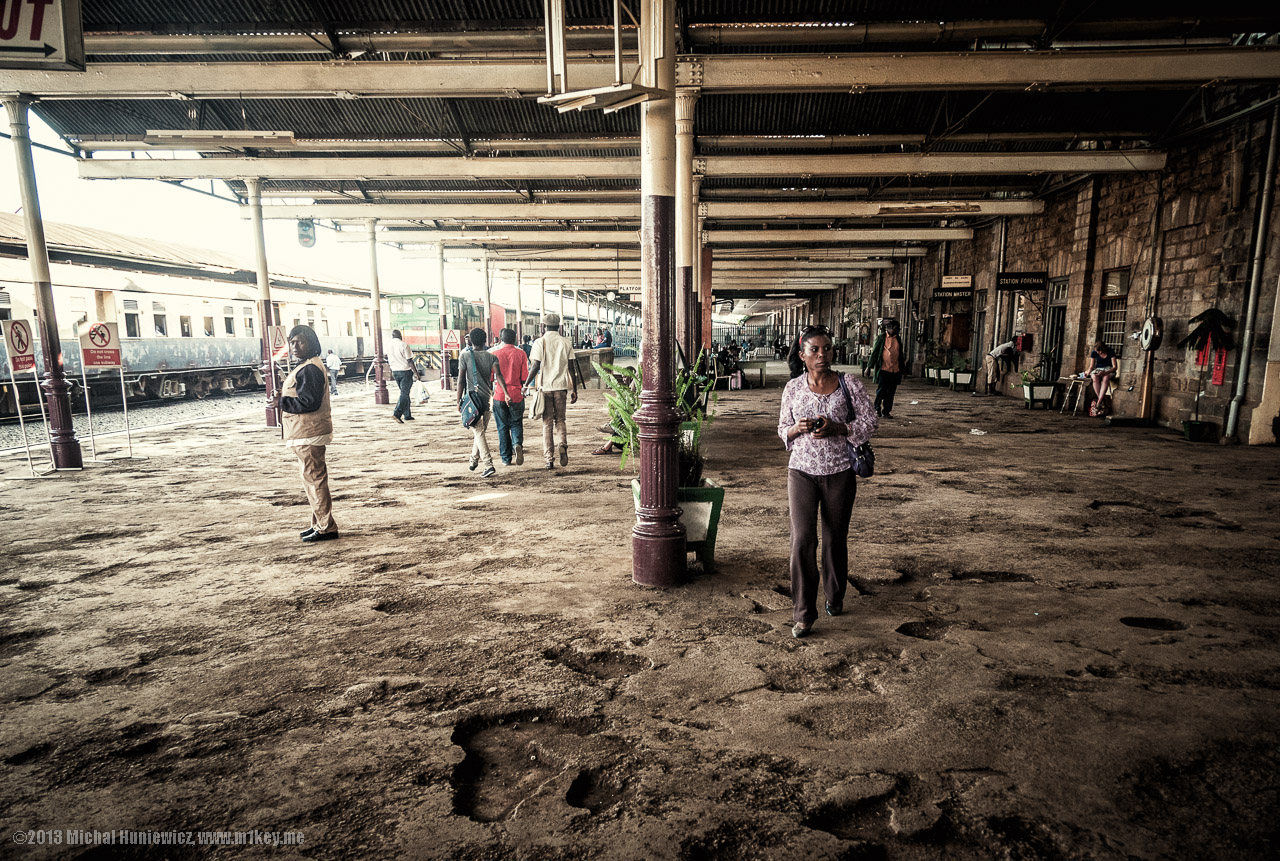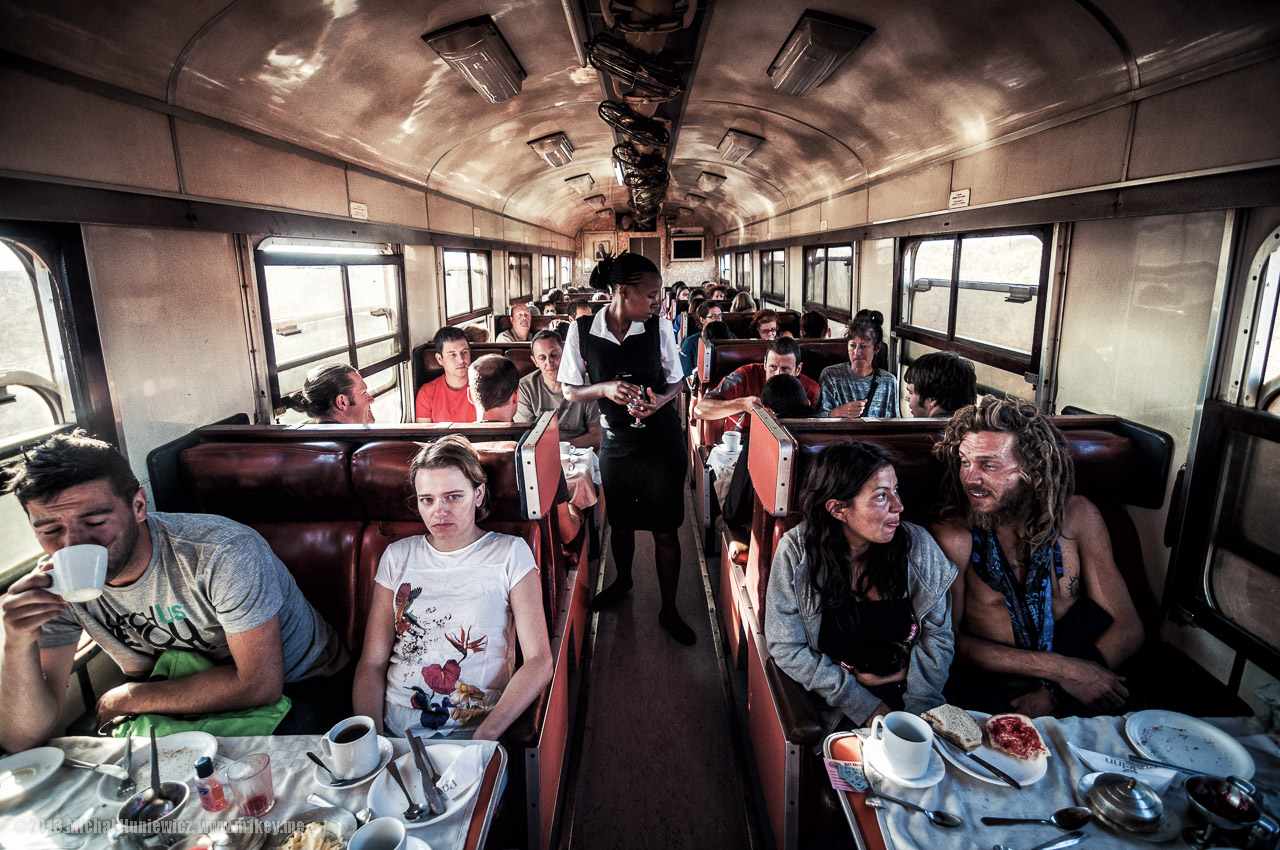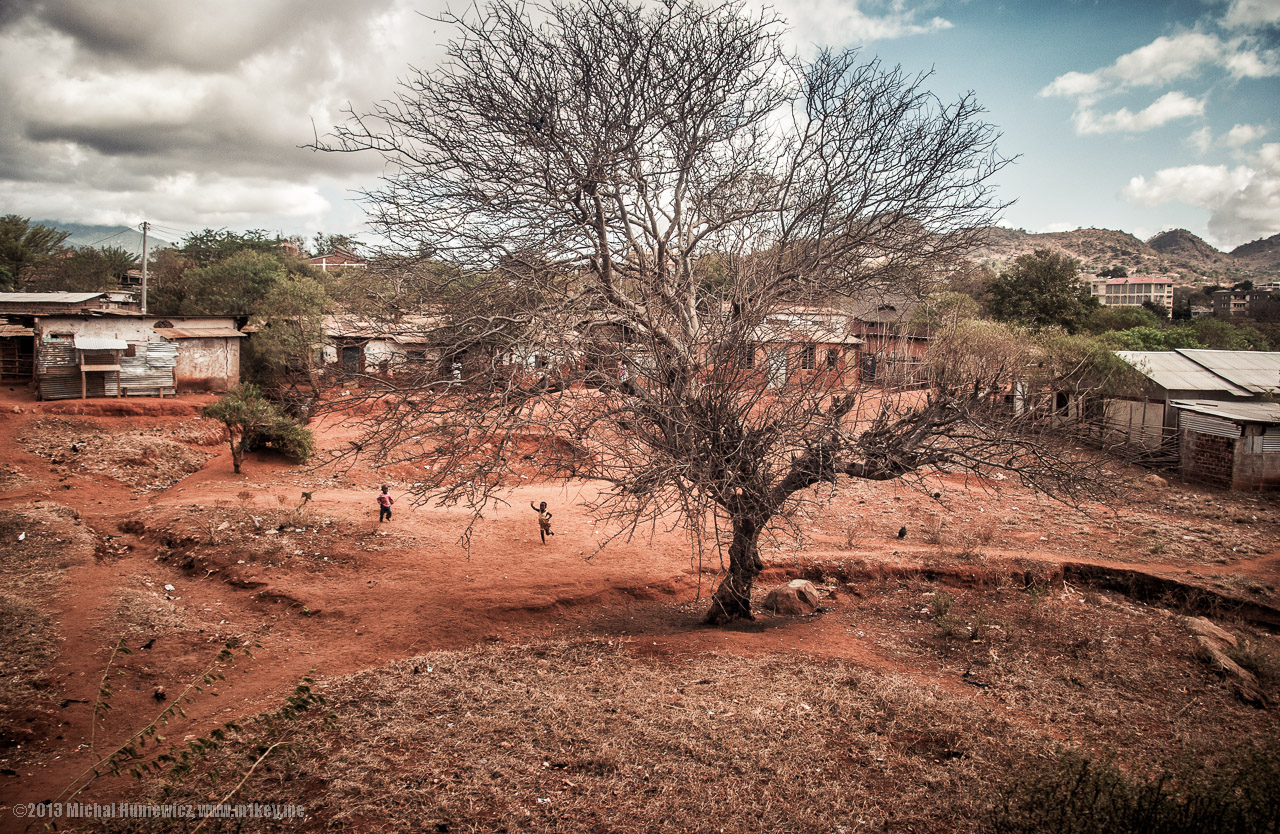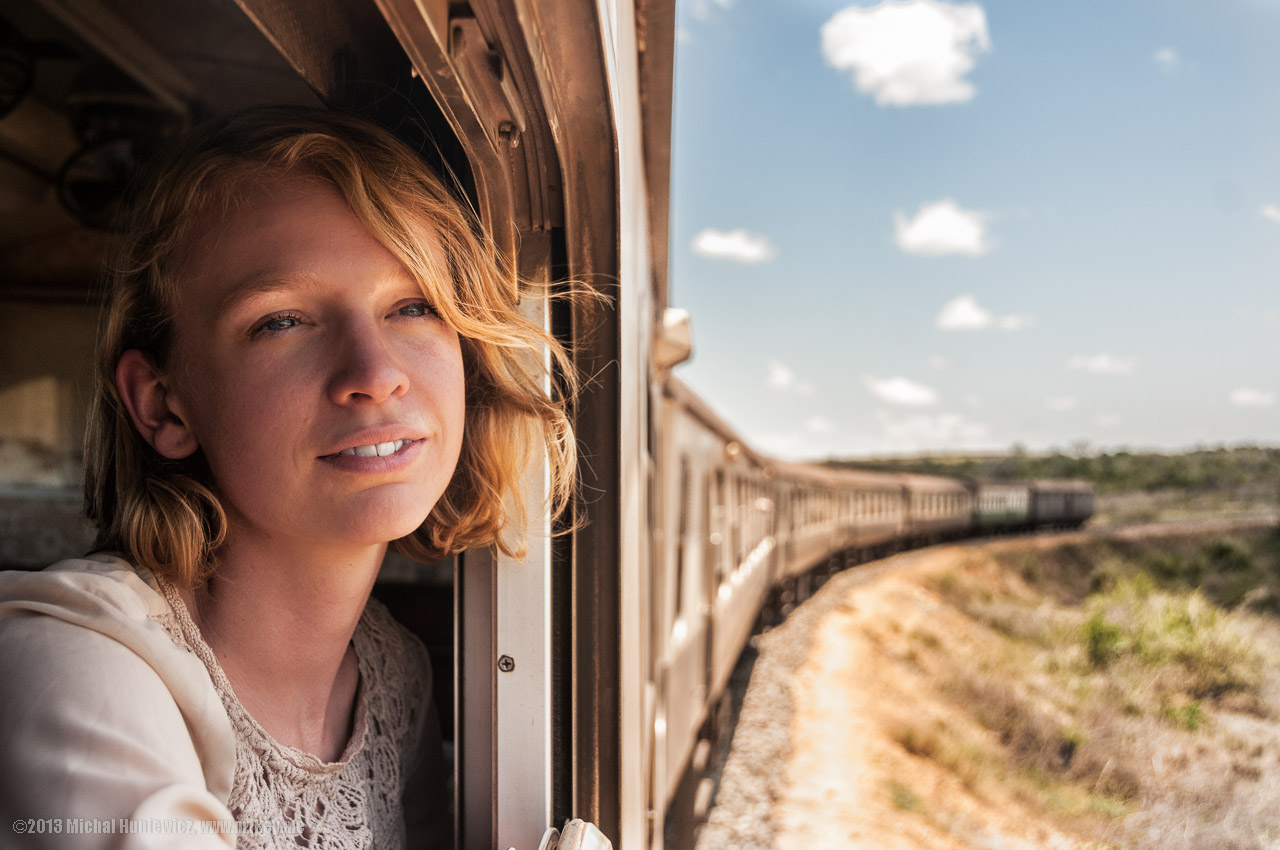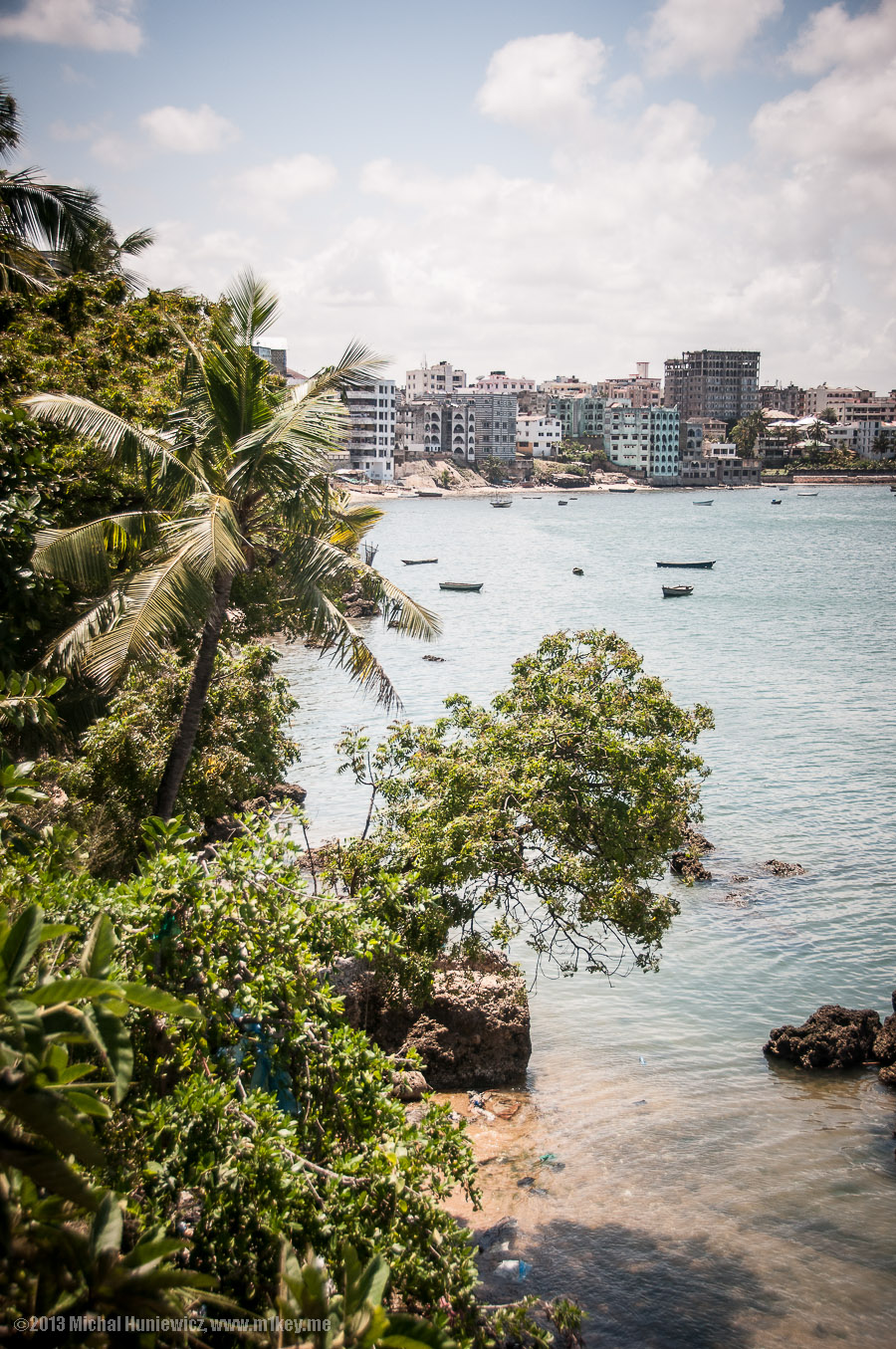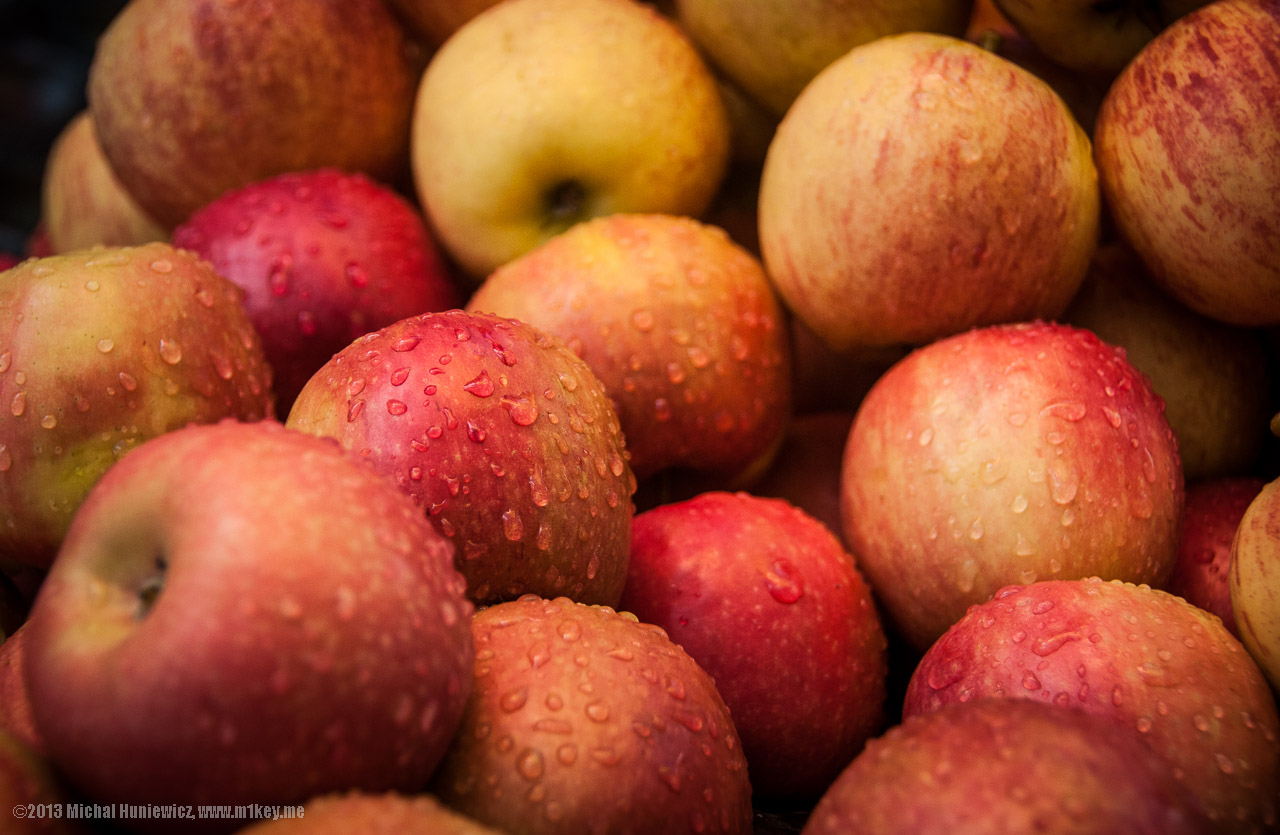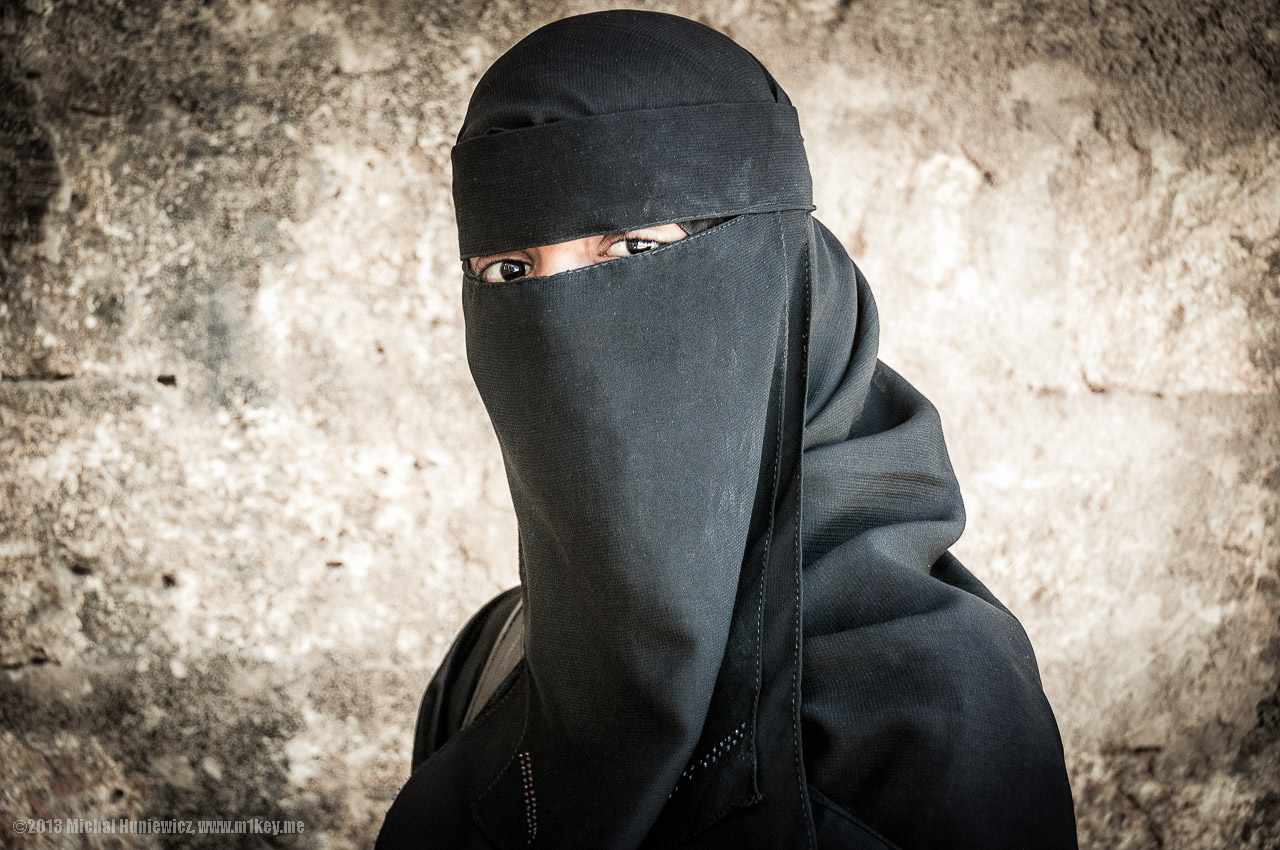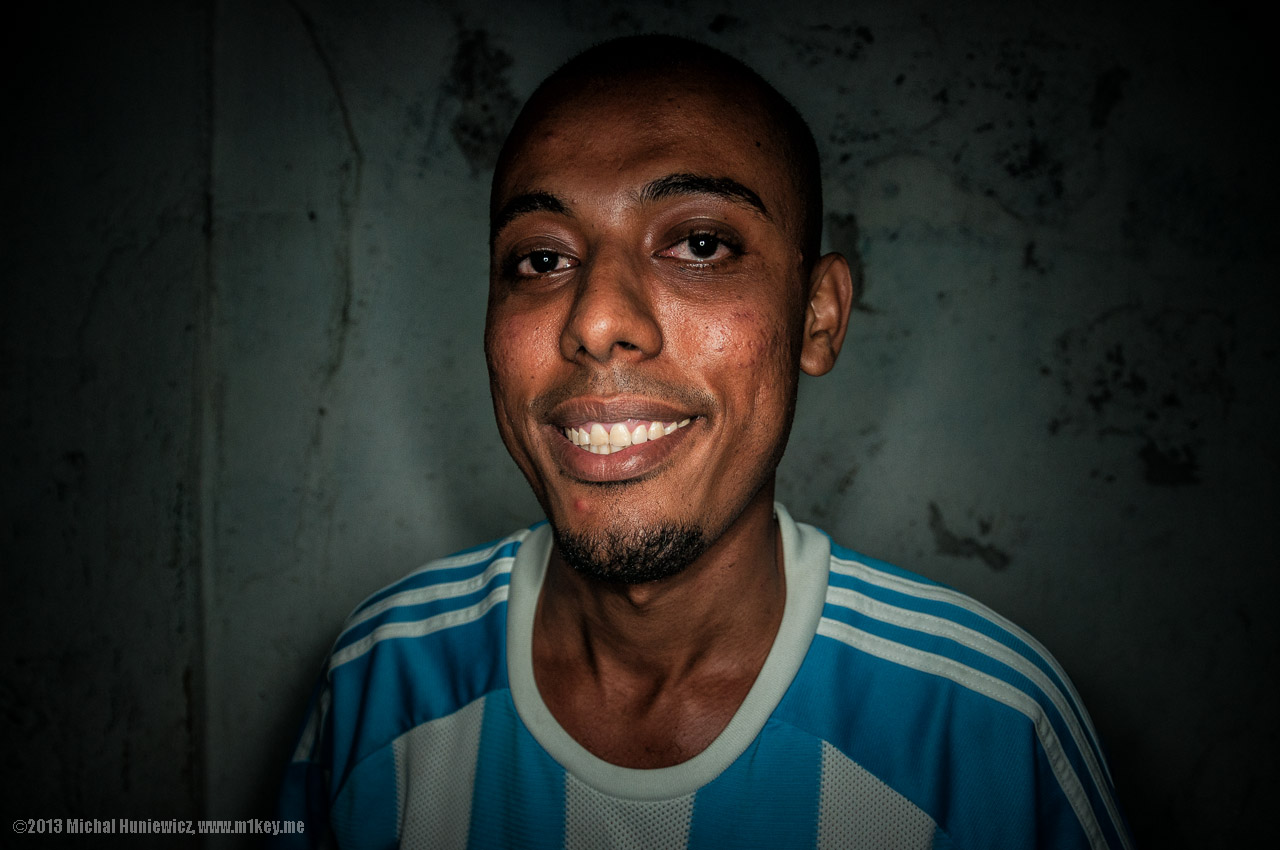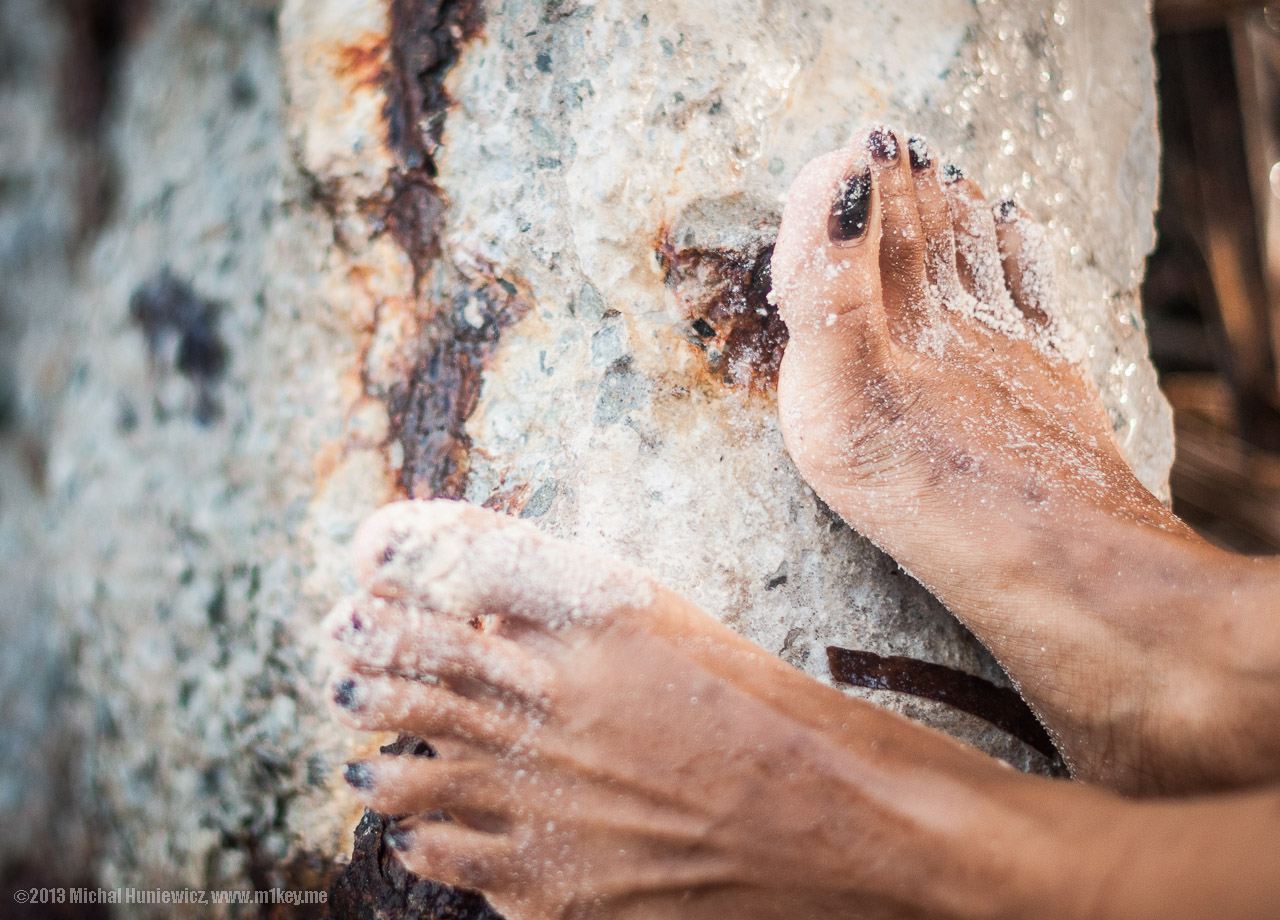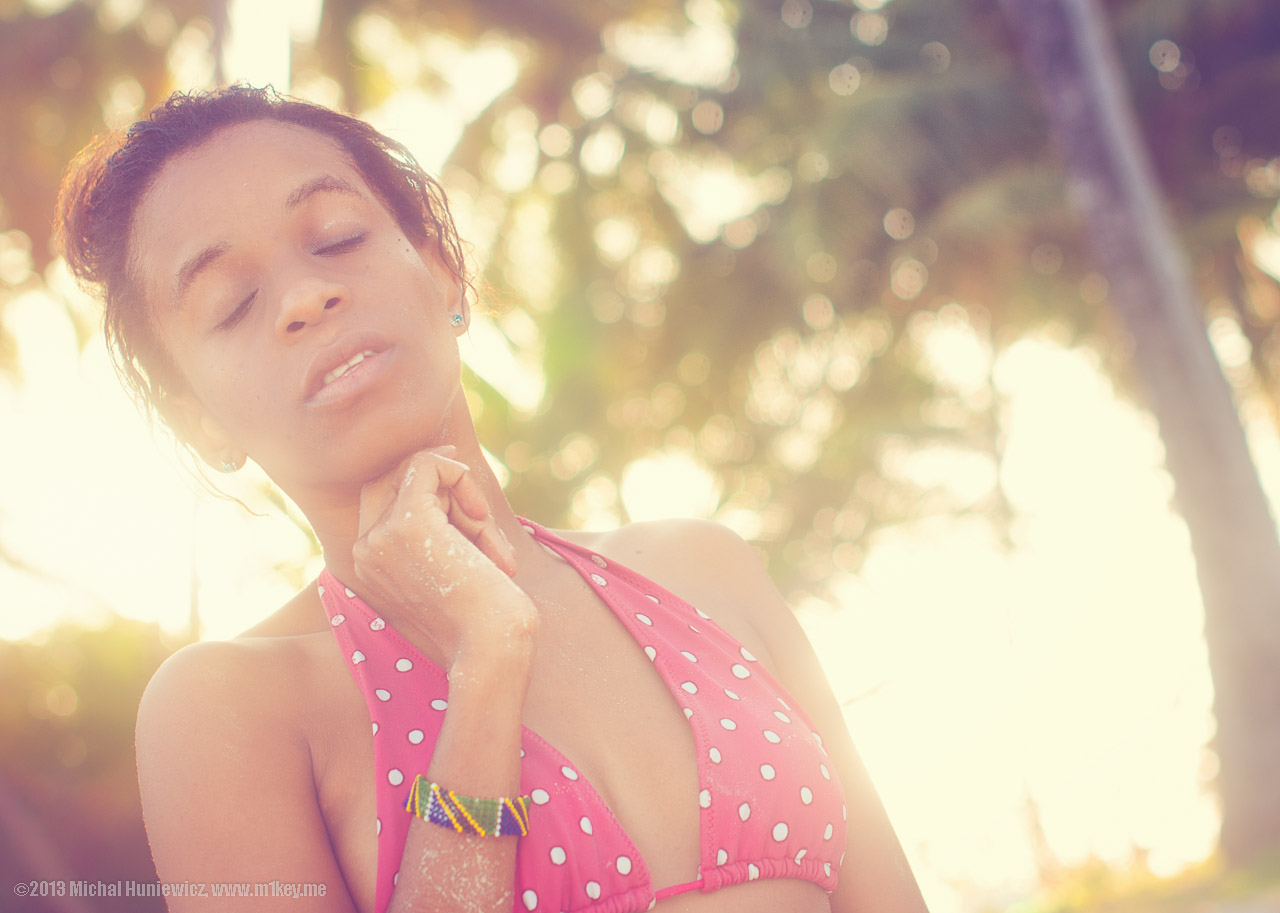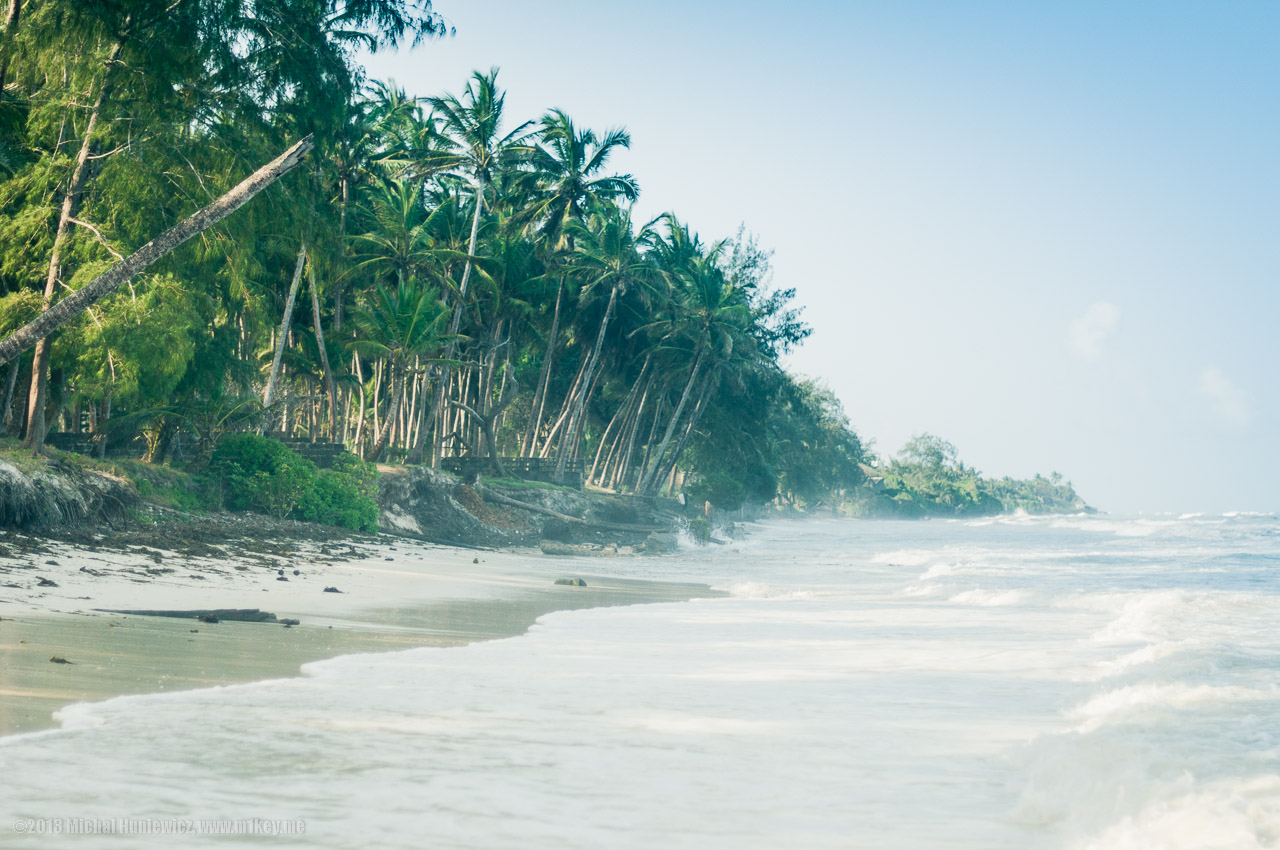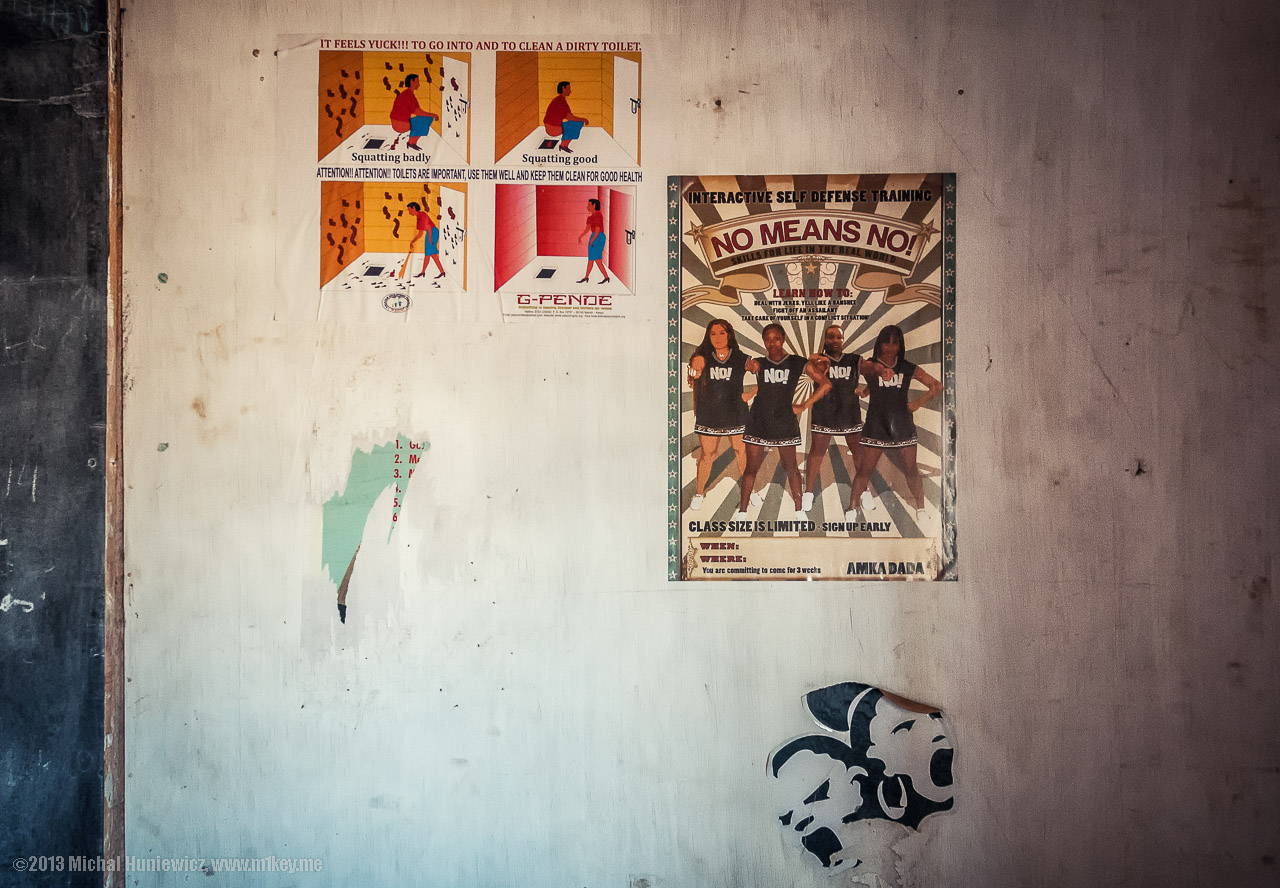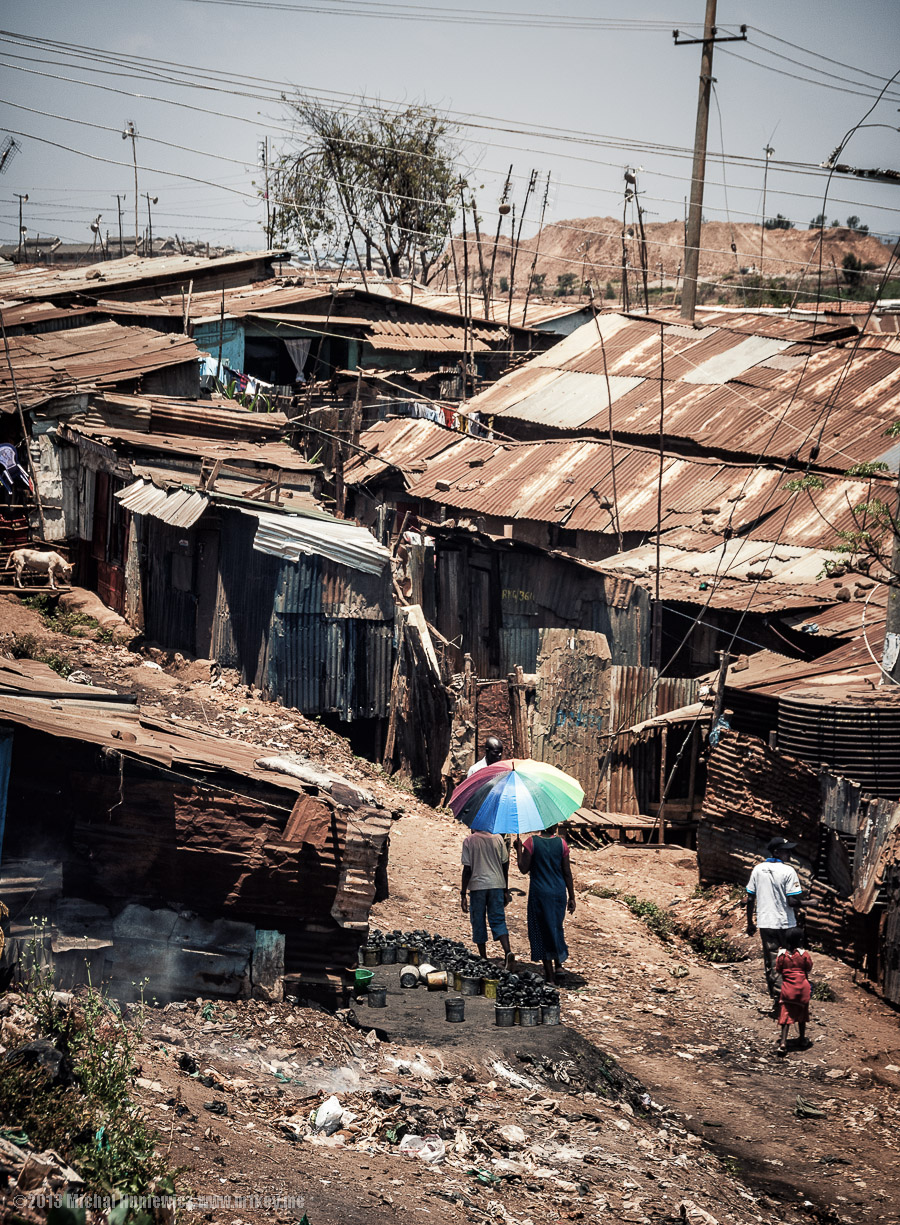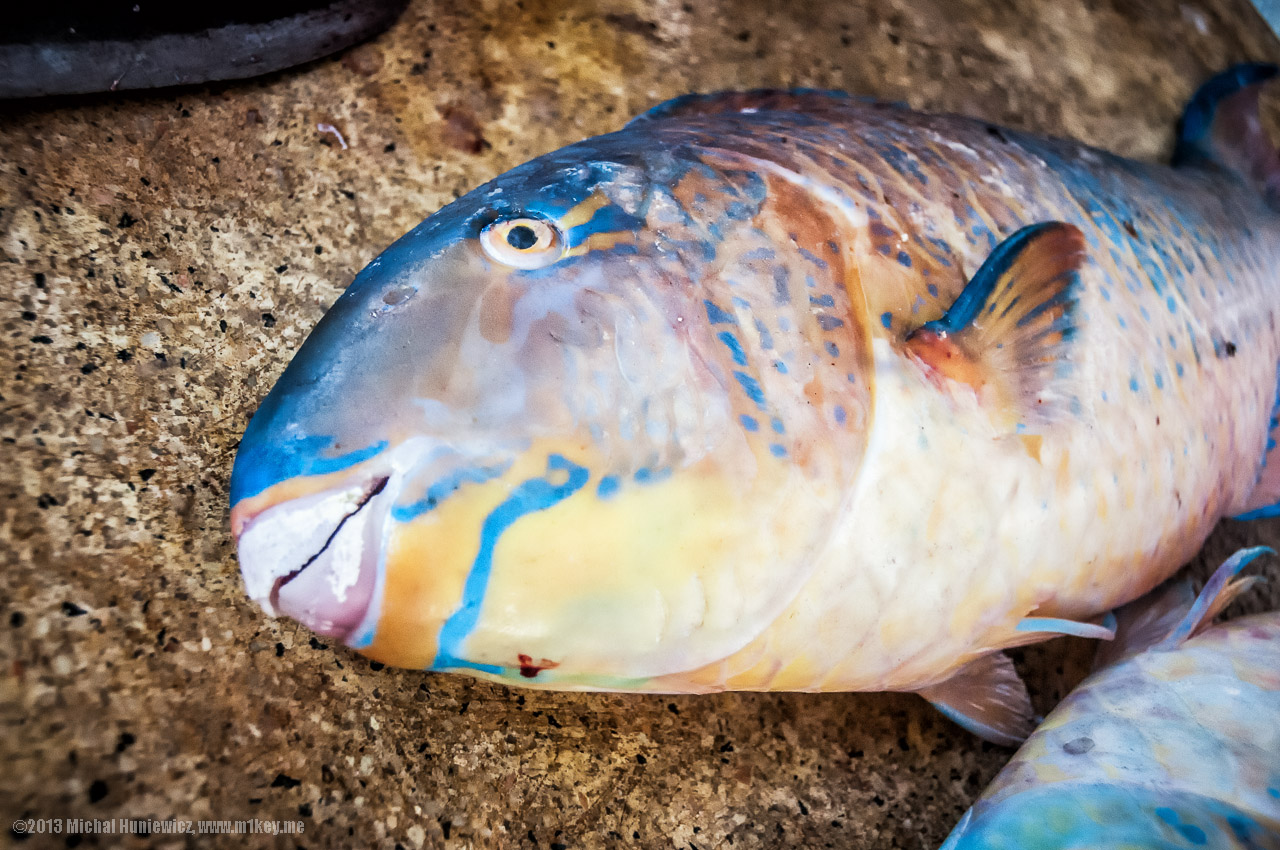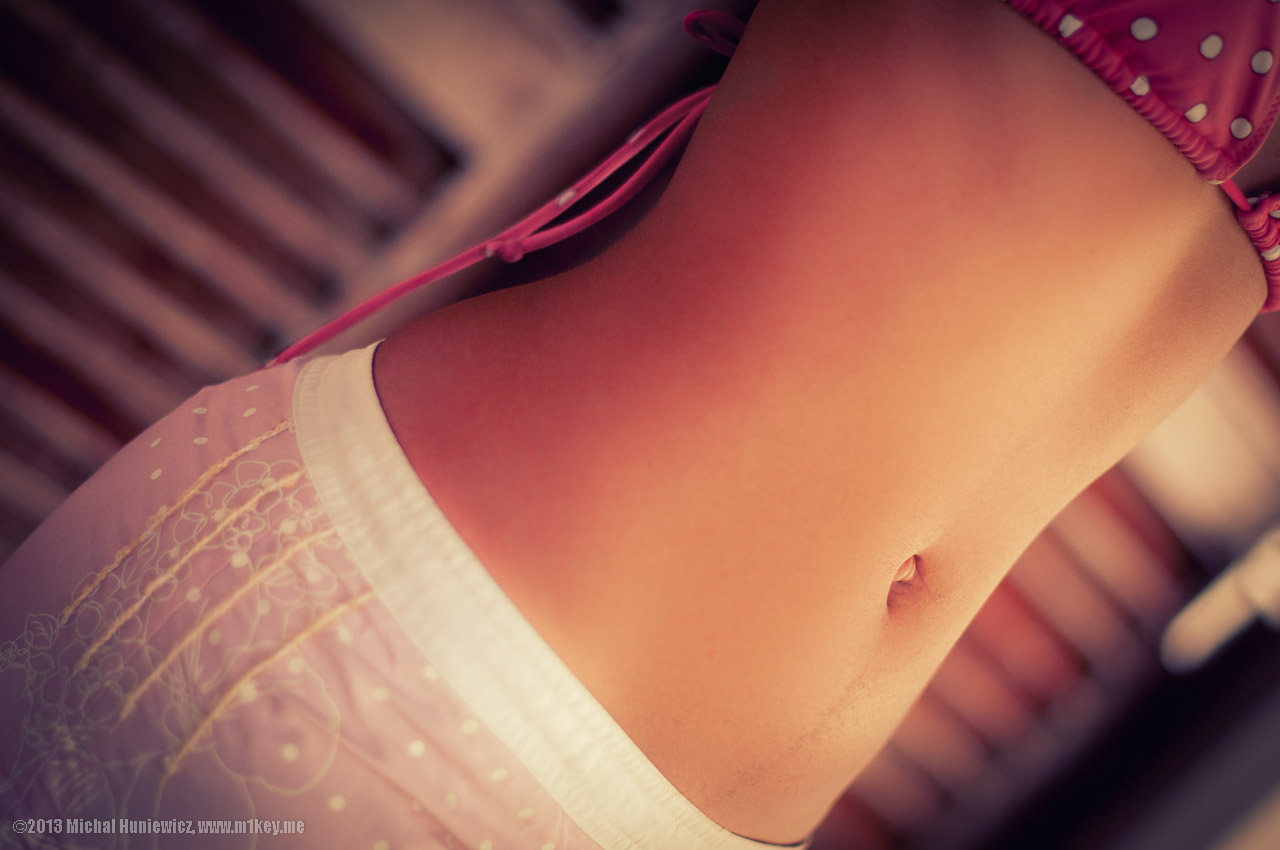Kenya Part 2: North East, Kibera & Mombasa Photography - M1key - Michal Huniewicz

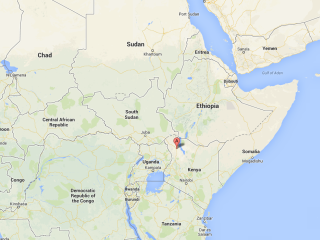
Welcome to Lodwar
The population of Lodwar is 50,000 [
1] people, but the town doesn't feel large at all. There's a strong Mad Max feel to it, it's really hot and dusty, and while
it makes a chaotic impression, there is a hospital, as well as some banks and schools.
ISO 200, 20mm, f/20, 1/160s.
Sources for this caption:
1
Turkwel River
The beauty of Lodwar is that it's not fake. This is the real thing - and although it does not represent the diversity Kenya like Nairobi does,
it is completely genuine. It's pretty raw, but the discomforts are the price we pay for keeping it real, in the words of Hemingway.
ISO 200, 18mm, f/20, 1/160s.
Herding sheep
We left our luggage in a Lodwar guest house built by local women, where a few UN cars stood parked. As we had no time to waste,
in a pre-arranged car with a driver/interpreter named Stephen we quickly headed towards Lake Turkana. Stephen shook his head
when I asked about armed herdsmen, but I insisted, and he spent most of the time with his mobile phone in his hand, using his network
of acquaintances to locate the big prize for me to photograph.
ISO 200, 26mm, f/18, 1/200s.
Two men on the road
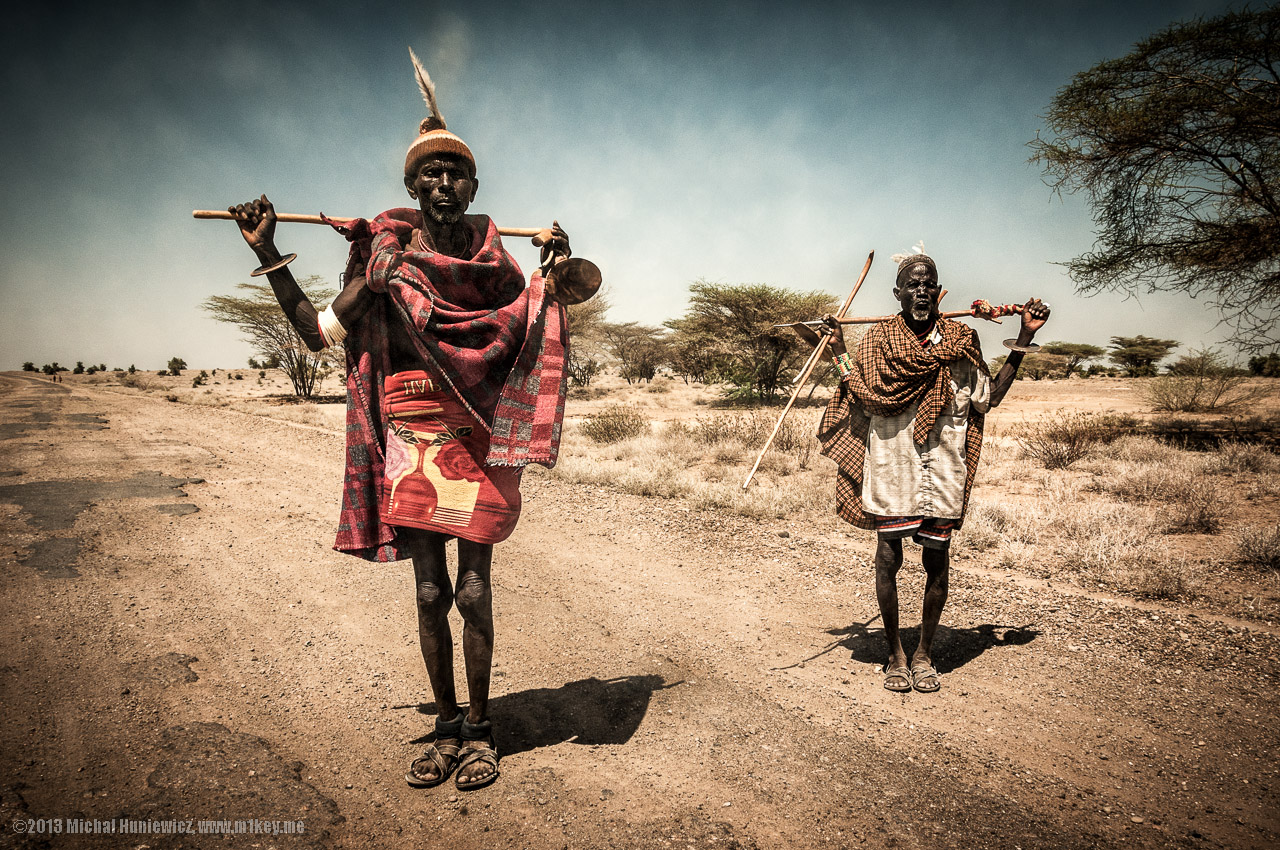
The road was awful, as you can see, and we were frying inside the car, but it was nothing compared to the heat outside of it, with no wind blowing,
and merciless sun scorching the lion-coloured landscape. The Lake Turkana region is the cradle of humankind, and I was wondering how my ancestors
ever survived in that place (but then 2 million years ago the climate must have been different). Apologies to creationists for the blasphemy! Speaking of which, even though plenty of early
human skeletons were found in the area, there were protests from Christian bishops against evolution when the skeletons were put on display in Nairobi. [
6]
I showed Stephen a photo of a herdsman with a rifle on his shoulders, and initially he thought it was the
pose I had in mind rather than the weapon, so he got those
two badass guys to pose like the armed guy from the pic, and then almost everyone else.
What they are holding in their hands, apart from the sticks, are little chairs, those round objects.
ISO 200, 18mm, f/18, 1/200s.
Sources for this caption:
6.
Bath
Beware of the scorpions, we were told. As I was making my way through the shrubs to take this shot, OUCH! Something pierced the sole of my shoe and my foot too.
Holy guacamole, I thought, that's the end of me! I looked down to see my murderer, but it was just a thorn - and so, I shall live.
ISO 200, 90mm, f/8.0, 1/800s.
Jolly man from Kalokol
In the town of Kalakol, we met this jolly fellow, as well as two dodgy guys who promised to... find an armed herdsman for me. We squeezed our butts in the car (5 people total),
and left Kalakol in search of the man.
ISO 800, 18mm, f/20, 1/30s.
Armed herdsman
And there he was! Ernst Hemingway wrote that "natives lie like hell", and that was often true, but not with those two guys.
Apparently, carrying a weapon is now illegal in Kenya, and the man was a bit anxious, so we had to drive off-road (6 people now) to take some shots. Mission accomplished.
ISO 200, 42mm, f/18, 1/200s.
Girl with a machete
On our way back we met this girl; she was shouting something to us from afar. I took this picture, and she said (Stephen translated it for me) "I would like people
from Uganda and Ethiopia to see this picture". All right then, they will on
my Facebook profile.
ISO 200, 50mm, f/10, 1/125s.
Girl wearing a scarf
Earlier that day, on our way to Lake Turkana, we drove off the road, and Stephen found those people. He asked them for armed herdsmen, and they didn't know. They then asked us for medicine,
pointing out an old man sitting on the ground in silence, but we didn't have any.
Later, my friend remembered to buy painkillers some in Kalakol, and she sacrificed a boat trip on Lake Turkana
to bring those people the medicine (we didn't have the time for both).
To be honest, I thought they would show more gratitude than they did, but oh well.
ISO 200, 55mm, f/7.1, 1/250s.
Boy with a stick
At least they posed. As you can see, Stephen told this one exactly how to pose.
The men from the village were apparently "days away", so it was just kids, women, and old people in the village.
ISO 200, 34mm, f/16, 1/100s.
Mother
In Africa, you get literally half an hour of good light, before the dusk (and early in the morning). Earlier the light is just too harsh. We were lucky to visit this village (see the huts behind her)
at the right time. Then - complete darkness around 7PM. We returned to Lodwar, I thanked Stephen a lot, and my friend and I spent the evening feeding a skinny cat and listening
to frogs. Not a lot of night life in Lodwar!
ISO 200, 50mm, f/16, 1/250s.
Lodwar Airport
And this is the humble Lodwar airport, all of it. In the morning, we flew back to Nairobi.
ISO 200, 18mm, f/3.5, 1/2000s.
Kibera
This is Kibera, the largest urban slum in Africa, and the third largest in the world. [
4] Established in the early 20th century,
it is located only 5 km away from the city centre, and its population is now estimated to be up to 1 million, depending on which slums are included in defining its borders.
Notice, on the right hand side, "proper" expensive housing just outside the slum. Kenyan authorities pretended for decades that Kibera did not exist, even though Kenyan president
Daniel arap Moi lived only hundreds of metres away from Kibera edge. [
5]
ISO 200, 32mm, f/11, 1/320s.
Sources for this caption:
4,
5.
Food break
Our guide was Abdul Kassim, a local community leader, and the founder of a local school, who recently gave a talk on TED. Kibera isn't the safest place,
but Abdul made sure we stayed out of trouble. You can see him in the back, having a peek inside the classroom.
Abdul founded Kibera Girls Soccer Academy, which is a secular organisation providing education to girls from Kibera. You too can help;
check out their website
for more details.
ISO 200, 11mm, f/14, 1/100s.
Classroom
The children get a chance to receive education, and Kibera schools perform exceptionally well on a national scale, having very limited resources. [
5]
They are looking for volunteers to help educate the kids.
ISO 360, 11mm, f/2.8, 1/80s.
Sources for this caption:
5.
Flowers
Bill Bryson says "whatever is the most awful place you have ever experienced, Kibera is worse". [
5] Not true, at least not in my case.
Kenyan Kibera was very different from the Indian slums that I saw - unlike them, it was very dynamic, full of life, with cheerful African music - despite
the circumstances. In fact, in 2012 The Economist suggested that Kibera "may be the most entrepreneurial place on the planet". [
4]
Some
Indian slums were just horrific.
ISO 200, 90mm, f/9.0, 1/640s.
Sources for this caption:
4,
5
Fish heads
When you buy a fish fillet in a fancy restaurant in Central Nairobi, the head of the fish will likely end up in a place like this.
60% of Nairobi population live in slums. [
7]
ISO 200, 32mm, f/9.0, 1/500s.
Sources for this caption:
7.
Man who offered changaa
This guy offered us changaa - a drink that looked like diarrhoea, and was in fact African moonshine. Its name means "kill me quick"; it's distilled from grains
like millet or maize. The drink is sometimes adulterated by adding jet fuel, battery acid, or (quite appropriately, maybe) embalming fluid. The water used to make it is often
contaminated with faeces, and women's underwear together with decomposing dead rats have been found in changaa too. [
3]
On the upside, it's very cheap. Its production was legalised in 2010 to keep it under control.
ISO 200, 28mm, f/4.0, 1/1600s.
Sources for this caption:
3
Map of the neighbourhood
Map of Kibera, showing safe and unsafe areas.
ISO 200, 27mm, f/4.0, 1/2500s.
Little feet
This woman was so charming and kind as opposed to the money-demanding Maasai, I was genuinely touched. I wish I could meet her again
and give her this photo.
ISO 200, 26mm, f/11, 1/250s.
Lollipop
It's worth remembering that, for a lot of people, slums like this one are an escape from an even worse rural life.
ISO 200, 28mm, f/9.0, 1/250s.
Asha
ISO 800, 22mm, f/3.8, 1/25s.
No means no
Posters in the school.
ISO 1250, 18mm, f/3.5, 1/80s.
Umbrella
A shop with coal.
ISO 200, 75mm, f/11, 1/250s.
Nairobi Train Station
The lunar floor of Nairobi Train Station, which felt incredibly colonial. Here, we waited for the Lunatic Express - the train on the single-track railway line from Nairobi to Mombasa.
ISO 280, 18mm, f/4.5, 1/80s.
Maryann
This is Maryann, whom I met on the plane from Lodwar to Nairobi, and who was invited to the cockpit by the pilot, but refused. She moved just like a panther.
ISO 200, 50mm, f/1.4, 1/250s.
Breakfast on the Lunatic Express
This is one of those legendary train journeys. The route is around 530 km long, and the overnight ride is supposed to take 12 hours, but usually takes more - 7 extra hours in our case.
You get to see wild animals outside, and you are fairly well fed, and everything is a bit retro. Unfortunately, in my scrambled eggs I found a snot with a hair attached to it, and that was the end of my eating
on this train.
Kenya Railways has a tradition of killing its passengers. There have been numerous accidents, and in 1993 this train plunged off a bridge into a river full of crocodiles, resulting in 140 fatalities. [
5]
ISO 200, 11mm, f/2.8, 1/200s.
Sources for this caption:
5.
Hello!
The train was a big thing for the kids, and there was not a single one I didn't wave back to.
ISO 200, 18mm, f/5.0, 1/1250s.
Ellen
This is a young scientist, Ellen, who has already achieved some recognition in that there is a cow in the Netherlands named after her. Ellen and I had such a good time
on the train that we joked we should go to Vladivostok together.
After I returned home, Ellen texted me from Kenya, saying "Yesterday I took the matatu [small bus], and ended up travelling with two local children on my lap,
while their father was gently fondling my hair".
There were a few really interesting persons on the train, and overall it was a really nice experience.
ISO 200, 28mm, f/4.5, 1/640s.
At last, Mombasa!
One of the most beautiful moments of the whole trip was reaching Mombasa. The palm trees, ocean breeze, warmth - holidays!
ISO 200, 35mm, f/4.2, 1/2000s.
Apples
I liked Mombasa a lot more than I did Nairobi - it's a town with a soul.
ISO 200, 50mm, f/4.8, 1/1250s.
Bui bui
A girl in a tight burqa I met and talked to in Mombasa. She got told off by an older woman for posing for me. The burqa is sometimes referred to as
bui bui, which means spider. [
7]
Kenyan Muslims are considered less strict than those of the Middle East. [
7]
ISO 200, 50mm, f/4.8, 1/1250s.
Sources for this caption:
7.
Parrotfish
Here's a fish I found in the old fish market.
ISO 200, 50mm, f/4.8, 1/1250s.
Near a mosque
A very brief history of Kenya:
There has been human habitation in Kenya since the beginning of the Lower Paleolithic (the Stone Age). During the Early Modern period,
there was European and Arab presence in Kenya, but mostly on the coast. The Arabs showed up around the 1st century AD, for the purpose of trade.
They established commercial posts, which eventually became Arab (or Persian) city-states, one of them was Mombasa. Portuguese presence in the region began after 1505. [
9]
We met this man near a mosque, and he showed us around, until we got kicked out when someone decided my female friend was wearing indecent clothes,
despite having covered her hair and shoulders (it was her unholy knees, you see), although I was told that
I could stay. To be fair,
the same thing happened to me in an Orthodox Christian church in Ukraine.
ISO 200, 18mm, f/3.5, 1/50s.
Sources for this caption:
9.
Fort Jesus

Both the Arabs and the Portuguese were involved in slave trade. [
9] Pictured is Fort Jesus, built by the Portuguese. This is the path leading to the sea, and the picture
was taken from a cave where slaves were kept.
The Portuguese lost interest in this part of Africa as it wasn't profitable for them any more, and Mombasa was conquered by the Omani Arabs, with some help from the English and Dutch.
Eventually, the British, stimulated by German competition, took over in the 19th century, and slavery in the region was abolished. [
8]
The British rule officially began in 1895, when they set up the East Africa Protectorate, which roughly defined what independent Kenya would constitute of almost 70 years later.
The protectorate eventually became a colony, and the British took over completely, which met some resistance from the local population, especially the Kikuyu tribe.
I could be completely wrong about this, but based on what I have read about the British rule in East Africa and the British rule in India, it seems to me that the Africans were
treated a lot worse than the Indians in terms of general respect, British interest in making the territory better (through investment and education), and the manner of eventual
exit.
ISO 200, 18mm, f/4.0, 1/100s.
Sources for this caption:
8,
9.
Government Square
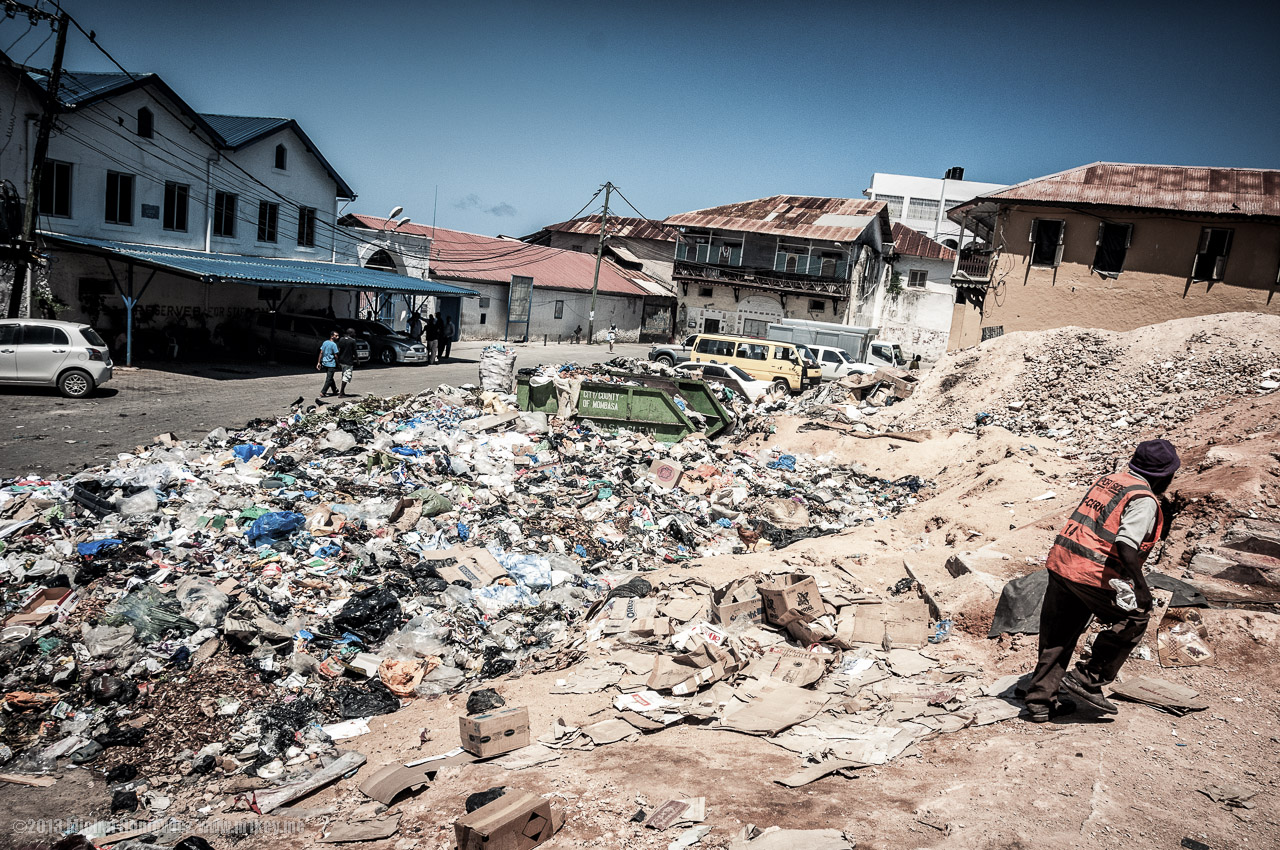
Finally, the frustration with the British rule led to the so called Mau Mau Uprising, which was an internal struggle among the Kikuyu tribe as much as it was against
the British, whom Kenyan writer Ngugi wa Thiong'o called "parasites in paradise" [
10, p. 79], and took place in the 1950s. It was an ugly and bloody conflict, which still causes some controversy and has been highly politicised.
The uprising, portrayed in England as a struggle between civilisation and savagery [
10, p. V], failed, but the ruthless manner in which the British dealt with it, which included detaining hundreds of thousands of innocent people in the concentration camps of Kenyan Gulag,
became an international embarrassment for them, and weakened the already fading Empire. [
7] In the name of "war on terror", human rights of the Africans were suspended.
Finally, in 1963 Kenya became independent. Soon, white settlers were actually welcome by some, as they were supposed to help protect the country against the influence
of the Soviet Union as the Cold War era dawned, following World War 2. [
11, p. 2]
Mau Mau rebels, celebrated by some while despised by others, were under a close watch by the Kenyan intelligence. [
90] Most soldiers
(whether white or black) responsible for Mau Mau counter-attack atrocities were never punished.
For an overview of the recent history of Kenya, please
see my gallery part 1.
ISO 200, 18mm, f/8.0, 1/1000s.
Sources for this caption:
7,
10,
11.
To the beach
Finally, to end the trip in a relaxing way, we went to the beach together with a girl met in Mombasa.
ISO 200, 50mm, f/1.4, 1/2000s.
Tummy
This is her tummy as she was changing.
ISO 200, 50mm, f/1.4, 1/640s.
Rahema
Her name is Rahema - she wasn't posing in this picture, would you believe? Natural shot.
ISO 200, 50mm, f/3.2, 1/250s.
Paradise
Ah, paradise. Or is it? We were constantly harassed by young men ("beach boys") trying to sell us something, who just wouldn't walk away... So annoying! Anyway, it was a nice final day
in Mombasa.
There will be more photos of Mombasa in my third gallery from Kenya.
ISO 200, 50mm, f/1.4, 1/6400s.

